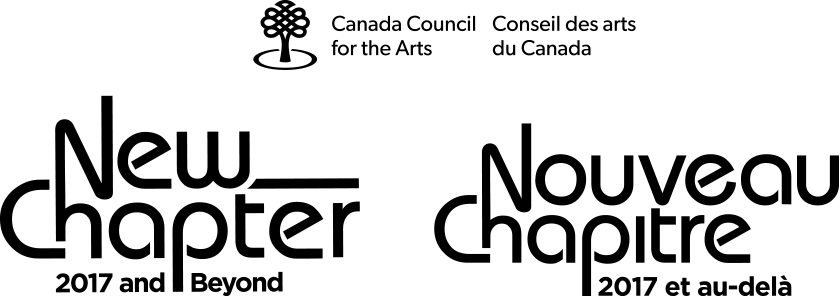11 January 2019 – 7 April 2019
Hexsa’a̱m: To Be Here Always
-
Siku Allooloo
ArtistSiku Allooloo (Inuk/Haitian Taino) is a writer, facilitator and land-based educator from Denendeh (NWT) and Pond Inlet, NU. She also belongs to a Dene family and a strong lineage of storytellers/leaders on all three sides who have raised her to be close to the land. Allooloo has led resurgence-based work on the land in Denendeh since 2014, and in artistic collaborations with Indigenous artists across the country. Much of her work centres on decolonial ethics, resurgence and transformation. Her writing has been featured in Briarpatch Magazine, The Malahat Review, Nuit Blanche Toronto and Surrey Art Gallery Presents, among others. In 2018, she joined Gwaandak Theatre, Whitehorse as the Artistic Producer and was a guest faculty member at Banff Centre’s The Space Between Us: Technology, Collaboration and the Future. She is deeply honoured to be part of this project.
Read More
-
Scott Benesiinaabandan
ArtistScott Benesiinaabandan (Anishinaabe) is an intermedia artist who works primarily in photography, video, audio and printmaking. Benesiinaabandan has completed international residencies at Parramatta Artist Studios in New South Wales, Australia, Context Gallery in Derry, Northern Ireland and the Royal Melbourne Institute of Technology iAIR Residency, along with international collaborative projects in the United Kingdom. Benesiinaabandan is currently based in Montreal where he is completing a year-long Canada Council New Media Production grant through Obx Labs/AbTeC and the Initiative for Indigenous Futures, investigating virtual reality (VR) as a medium. He recently completed a National Film Board-Ford Foundation intensive residency around VR. In the past years, Benesiinaabandan has received grants from the Canada Council for the Arts, Manitoba Arts Council, Winnipeg Arts Council and Conseil des arts et des lettres du Québec. Benesiinaabandan has taken part in exhibitions across Canada and internationally, including Flatter the Land, Bigger the Ruckus at the Winnipeg Harbourfront Festival (2006), Subconscious City at the Winnipeg Art Gallery (2008), Ghost Dance at Ryerson Image Centre (2013) and The Fifth World at Mendel Art Gallery, Saskatoon (2015), as well as solo exhibitions unSacred at Gallery 1C03, University of Winnipeg (2011), Mii Omaa Ayaad/Oshiki Inendemowin, Sydney, Australia (2012), Blood Memories, Melbourne, Australia (2013) and little resistances at Platform Gallery, Winnipeg (2015). His work can be found in collections throughout Canada.
Read More
-
Lorna Brown
CuratorLorna Brown is a Vancouver-based visual artist, curator, writer and editor. Brown is a founding member of Other Sights for Artists’ Projects, and is an ongoing member of the Other Sights Producer team. She was the Director/Curator of Artspeak Gallery from 1999 to 2004, an artist-run centre focusing on the relationship between visual art and writing. Between 2015 and 2022, she was Acting Director/Curator at the Belkin, curating exhibition series such as Beginning With the Seventies that explored the relationship between art, archives and activism. Brown has exhibited her work internationally since 1984, and has taught at Simon Fraser University and Emily Carr University of Art and Design where she received an honorary doctorate of letters in 2015. Awards include the Vancouver Institute for the Visual Arts Award (1996) and the Canada Council Paris Studio Award (2000). Her work is in the collections of the Belkin, SFU Galleries, the National Gallery of Canada, the BC Arts Council, the Surrey Art Gallery and the Canada Council Art Bank.
Read More
-
Darryll Dawson Jr.
ArtistDarryll Dawson Jr. (Kwakwak’wakw) is a proud member of the Musgamakw Dzawada’nuxw First Nation of Kingcome Inlet. Growing up in Kingcome, his grandparents took him to numerous potlatches and feasts in Kingcome as well as with other tribes within the Kwakwak’wakw Nation. These experiences led him to learn dancing and singing at an early age. In 1993, he moved to Victoria and took his first Native Art class where he built the foundation of painting and design and started to develop his own style by age 17. In 2000, the Nanwakola Cultural Society commissioned him to design and paint a lamilas (ceremonial designed screen) for the Bighouse opening in Kingcome, where he also painted house posts carved by Master carver Beau Dick. Dawson apprenticed with Master carver Rande Cook and worked with Master carver John Livingston in Victoria, BC. His artistic inspirations are his late father Darryll Dawson Sr., his uncle Peter Dawson, William Wasden Jr., Beau Dick, Wayne Alfred, John Livingston, Rande Cook, Frances Dick and Marianne Nicolson. In 2013, Dawson moved back home to Kingcome. He currently works as a cultural co-ordinator in Kingcome to bring the community together to learn cultural practices, traditions, and ceremonies.
Read More
-
Jaymyn La Vallee
ArtistJaymym La Vallee (Sḵwx̱wú7mesh, Kwikwasut’inuxw and ‘Namgis) grew up in North Vancouver, BC on the Capilano Reservation. She is currently learning her Indigenous language, Kwakwala, and is completing her Bachelor of Education through the Indigenous Teacher Education Program (NITEP) at the University of British Columbia. La Vallee hopes to work with Indigenous children and young adults, teaching language and culture. She is passionate about food sovereignty and hopes to incorporate land-based learning values into her philosophy of teaching.
Read More
-
Marianne Nicolson
ArtistMarianne Nicolson (Kwakwa̱ka̱’wakw, Musga̱maḵw Dzawada̱’enux̱w First Nations, b. 1969) is an artist and activist of the Musga̱maḵw Dzawada̱’enux̱w Nations who are part of the Kwakwa̱ka̱’wakw (Kwak’wala speaking peoples) of the Northwest Coast. She is trained in both traditional Kwakwa̱ka̱’wakw forms and culture and contemporary gallery and museum-based practice. Her practice is multi-disciplinary, encompassing photography, painting, carving, video, installation, monumental public art, writing and speaking. She works as a Kwakwaka’wakw cultural researcher and historian, as well as an advocate for Indigenous land rights. She holds a BFA from the Emily Carr University of Art and Design (1996), an MFA (2000), MA in Linguistics and Anthropology (2005) and PhD in Linguistics and Anthropology with a focus on space as expressed in the Kwak’wala language (2013) all from the University of Victoria. Solo exhibitions include the Art Gallery of Greater Victoria (2008); Artspeak, Vancouver (2006); Esquimalt Municipal Hall (2004); Thunder Bay Art Gallery (2002); National Indian Art Centre, Hull (2001); Campbell River Public Art Gallery (2000) and Or Gallery, Vancouver (1992). Group exhibitions include the 17th Biennale of Sydney (2020); the Morris and Helen Belkin Art Gallery, Vancouver (2020); the Vancouver Art Gallery (2019-20); the National Gallery of Canada, Ottawa (2018-19) and the National Museum of the American Indian, New York (2017-19), among others. Major monumental public artworks are situated in her home territory of the Musga̱maḵw Dzawada̱’enux̱w First Nation, Vancouver International Airport, the Canadian Embassy in Amman, Jordan and the Canadian Embassy in Paris, France.
Following Nicolson’s Hexsa’a̱m: To Be Here Always, a 2019 project with the Belkin that functioned as research, material, media, testimony and ceremony to challenge the western concept that the power of art as limited to the symbolic, This Is An Emergency Broadcast (2023) is another moment to amplify Indigenous tradition.
Read More
-
Diane Roberts
ArtistDiane Roberts (American) is an interdisciplinary performance creator, director, dramaturge and cultural animator who has collaborated with theatre artists for the past thirty years. Her directorial and dramaturgical work has been seen on stages across Canada and her reputation as a mentor, teacher and community collaborator is nationally and internationally recognized. Through practice and teaching, Roberts has developed her voice as a cultural leader—cultivating and promoting a vision for performance that encourages Indigenous ways of knowing as a stepping-stone to authentic creative expression. This vision is bolstered by the creation of innovative projects inspiring trans-disciplinary and trans-cultural collaborations. Roberts’s Arrivals Personal Legacy Project (www.arrivalslegacy.com) developed during her seven-year tenure as Artistic Director of Urban Ink productions and has yield interdisciplinary works across Canada, throughout the Americas, in the UK, Europe and the Caribbean. Roberts is also a founding member of Obsidian Theatre and backforward collective in Toronto, Associate Artist of lbs/sq” (Toronto) and co-founder and Artistic Director of Boldskool Productions (Vancouver, Montreal) with playwright Omari Newton. Roberts is currently pursuing her PhD in Interdisciplinary Studies at Concordia University.
Read More
-
Sara Siestreem
ArtistSara Siestreem (Hanis Coos) is a multi-disciplinary artist and educator working in painting, photography, printmaking, sculpture and traditional Indigenous weaving based in Portland, OR. Siestreem’s artistic practice engages in critical issues of sovereign Indigenous rights, Indigenous knowledge systems and ecology. Siestreem’s current project of learning, practicing and teaching traditional Indigenous basket weaving stems from her work on institutional critique and access to historic collections of Coos material and archives. Through engaging in these traditional practices, Siestreem invokes the complex histories and embodied knowledges of the communities and peoples who have also woven these baskets across eras. Siestreem received her MFA from the Pratt Art Institute in Brooklyn, NY, and is the recipient of numerous grants, scholarships and residencies. Siestreem’s work has been shown across the US and BC, including at the Portland Art Museum in Portland, OR; The Museum of Natural and Cultural History at the University of Oregon; The Art Gallery of Greater Victoria in Victoria, BC; The Museum of Northwest Art in Seattle, WA; among many other spaces. She is currently represented by the Augen Gallery in Portland, OR.
Read More
-
Juliana Speier
ArtistJuliana Speier is an emerging visual artist who recently graduated from high school and plans to attend the University of Victoria for biology and arts. The youth artist/activist is of mixed heritage and comes from the non-treaty Dzawada’enuxw First Nation of Kingcome Inlet, BC. Her interests lie in painting and photography. Her work predominantly involves themes of nature, using it as a connection point for education on issues relating to both her Indigenous heritage and the environment. In 2017, Speier was part of an Indigenous emerging artist project with the Pacific Peoples’ Partnership, and in 2019 she will travel to Brazil for five months to volunteer at IPBIO, a biological research station in one of the national parks.
Read More
-
Nabidu Taylor
ArtistNabidu Taylor (Musgamagw Dzawada’enuxw) is an emerging artist who was raised in the Musgamagw Dzawada’enuxw First Nation, and is currently based in Victoria, BC. She had her first training with elders in traditional media and has gone on to work in photography and video. Her work explores relationships between contemporary youth and their ancestral territory and culture. She is completing a program in environmental tourism and she has an extensive photo practice on Instagram @Nabidu
Read More
-
Althea Thauberger
ArtistThauberger is an artist and filmmaker and an Associate Professor of Visual Art at the University of British Columbia. Her artistic work involves collaborative research and is primarily concerned with the relationship between community narratives and geopolitical histories. Thauberger has produced and exhibited her work internationally including recent exhibitions at the Contemporary Art Gallery in Vancouver and the Kaunas Biennial in Lithuania.
Read More
-
Kamala Todd
ArtistKamala Todd is Métis-Cree with roots in St. Paul de Métis Settlement and Whitefish Lake Alberta. She is grateful to live in the beautiful homelands of the hən̓q̓əmin̓əm̓- and Skwxwú7mesh-speaking people, also known as Vancouver, where she was born and raised. Todd is a community planner, filmmaker, writer and curator with an MA in cultural geography (UBC). For six years, she was the City of Vancouver’s Aboriginal Social Planner (2000-06). Todd’s film credits include Indigenous Plant Diva, Cedar and Bamboo, RELAW: Living Indigenous Laws and Sharing our Stories: The Vancouver Dialogues Project. In 2015, she created a video series about Indigenous law for the University of Victoria’s Indigenous Law Research Unit. Todd writes and directs for children’s television, including the Indigenous science series Coyote’s Crazy Smart Science Show on APTN. She is the author of “This Many-storied Land” published in In This Together: Fifteen Stories of Truth and Reconciliation (2016). She recently completed a report for the Vancouver Parks Board entitled Truth-Telling: Indigenous Perspectives on Working with Municipal Governments (2017). Todd has curated special events and exhibits for such groups as Indian Summer Festival, David Suzuki Foundation and the Roundhouse Community Arts and Recreation Centre. She is the proud and grateful mother of Kai and Anostin, emerging artists and storytellers themselves.
Read More
-
William Hiłamas Edward Wasden Jr.
ArtistWilliam Hiłamas Edward Wasden Jr. Wax̱a̱widi “Canoes Come to His Shore” was born at ʼYa̱lis (Alert Bay), BC on October 14, 1967, and is a member of the ‘Na̱mg̱is Nation “Nimpkish Valley Tribe”. Wasden has always been fascinated with the artwork and style of his Kwakwa̱ka̱’wakw and belongs to many respective tribes within the Kwakwa̱ka̱’wakw. Wasden carries many names and dances that have been bestowed on him by various sides of his families. He is a member of the most sacred ‘Mamaḵ̓a “Shaman Dance Society” and Hamat̓sa “Cannibal Dance Society”, among others. Wasden is also a descendant of the Cook, Wanukw, Hunt, Alfred, Harris and Innis families; tracing his ancestry to the Tłingit of Alaska and the Mowachaht of the West Coast. The last Kwakwa̱ka̱’wakw Song Keeper/Composer/Historian Chief Hiwaki̱lis Tom Willie “Mackenzie” and wife Matriarch ‘Ma̱lidi Elsie (nee Wamiss) daughter of Chief Helagi̱lis Tom “Patch” Wamiss were Wasden’s mentors. From them Wasden learned numerous Kwakwaka’wakw traditional songs and how to compose them. He continues to teach all that he knows to the next generation. Wasden also led the G̱wa’wina Dancers Cultural Society, an adult professional dance group intending to share authentic Kwakwa̱ka̱’wakw culture and teachings. Presently, Wasden is the Cultural Coordinator and teaches at Ḵ̓aḵ̓udłat̓s “House of Learning,” a First Nation’s School at Quatsino, BC.
Read More
-
Tania Willard
ArtistTania Willard (Secwépemc Nation, b. 1977) is an artist and curator of mixed Secwépemc and settler ancestry and beginning January 2026, the Belkin’s Director/Curator. Willard’s research and creative processes are informed by land-based and community-engaged art practices, connections to culture and family, and intersections between Aboriginal and other cultures. Often focusing on Secwépemc aesthetics, language and land, Willard explores the shifts and tensions between ideas of the contemporary and the traditional. Willard centres art as an Indigenous resurgent act through her collaborative projects and her support of language revitalization efforts in Secwépemc communities. Willard’s personal curatorial projects include BUSH gallery, a conceptual space for land-based art and action led by Indigenous artists. Willard received an MFA from UBC Okanagan in 2018. Her work has been the subject of solo exhibitions at Kamloops Art Gallery; Burnaby Art Gallery; and SFU Audain Gallery, Vancouver. Her work has been featured in group exhibitions at FotoFocus Biennial; Cincinnati Arts Centre; Haus der Kulturen der Welt, Berlin Germany; Morris and Helen Belkin Art Gallery; and Open Studio Contemporary Printmaking Centre, Toronto. Willard has curated numerous exhibitions, including the traveling exhibition Beat Nation: Art, Hip Hop and Aboriginal Culture that began at the Vancouver Art Gallery (co-curated with Kathleen Ritter); Exposure: Native Art and Political Ecology at the IAIA Museum of Contemporary Native Arts, Santa Fe; Unceded Territories: Lawrence Paul Yuxweluptun at the Museum of Anthropology (co-curated with Karen Duffek); and CUSTOM MADE at Kamloops Art Gallery. She was a curator in residence with grunt gallery and Kamloops Art Gallery. Willard was selected as one of five curators for a national scope exhibition in collaboration with Partners in Art and National Parks. She received the 2016 Hnatyshyn Foundation Award for Curatorial Excellence in Contemporary Art, the 2020 Shadbolt Foundation VIVA Award, and was named a 2022 Forge Project Fellow. Her work with BUSH gallery was recognized through the Ruth Foundation for the Arts Future Studies award (2022). Willard is an Assistant Professor in the Faculty of Creative and Critical Studies and Gallery Director at UBC Okanagan in Syilx territories (Kelowna, BC).
Read More
-
Lindsey Mae Willie
ArtistLindsey Mae Willie (Musgamagw Dzawada’enuxw) lives and works in Kingcome Inlet, BC. Her filmmaking explores Indigenous identities, particularly by youth who are hungry to learn their ancestral knowledge and wisdom from their elders. Willie explores the revitalization of her community’s language, culture, and arts, and in doing so, helps to recover and sustain Musgamagw Dzawada’enuxw artistic heritage. Willie’s practice as a documentary filmmaker and storyteller has evolved from eleven years of professional work behind the camera as both camera operator and editor. She has worked with CTV, Aboriginal Peoples Television Network (APTN), City TV, and OMNI Television. In 2012, Willie was awarded the Aboriginal Peoples Television Network’s Emerging Director Award and produced her first film, The Potlatch Keepers (2014), which aired on APTN. As an artist, activist and researcher, Willie works as the Traditional Land and Governance Coordinator for the Dzawada’enuxw First Nation. In this role, she has helped develop a governance engagement strategy to enhance the capacity of the Dzawada’enuxw First Nation to assert authority over its territory while engaging in the reconciliation process. Willie seeks out her culture by listening to her elders, and through hunting, fishing, traversing the wilderness, constructing traditional shelters and harvesting plants.
Read More
Opening Reception: Thursday, January 10, 6-9 pm
Book a weekend introductory tour at the Reception Desk or call 604-822-4883
Including work by artists Marianne Nicolson and Althea Thauberger with Siku Allooloo, Scott Benesiinaabandan, Darryl Dawson, Jaymyn La Vallee, Diane Roberts, Sara Siestreem, Juliana Speier, Nabidu Taylor, Kamala Todd, William Wasden Jr., Tania Willard and Lindsey Willie.
In 1914, delegates of the McKenna-McBride Royal Commission met with Johnny Scow (Kwikwasuti’nuxw), Copper Johnson (Ha’xwa’mis), Dick Webber and Dick Hawkins (Dzawada̱’enux̱w), and Alec Morgan (Gwawa’enuxw), as well as all the Kwakwa̱ka̱’wakw Chiefs, to establish the land base of the Kwakwa̱ka̱’wakw group of nations. A century later, in May 2018, the Dzawada̱’enux̱w First Nation launched the first-ever BC Supreme Court case to extend Aboriginal title to the ocean, claiming that the Province does not have the authority to grant tenures to salmon farms in the Broughton Archipelago. As two moments in a tangled timeline of resistance, these legal encounters bring forward the ways that cultural practices can bring new realities into being for a community experiencing ongoing social, cultural and ecological effects of colonization and globalizing economics.
Working together at Kingcome Inlet in Summer 2018, a group of artists used film, video, social media, weaving, animation, drawing, language and song to address the urgent threats to the land and water. A manifestation of the relationships formed between the participants over this past year, this exhibition is based on sharing knowledges and respectful collaboration. Simultaneously research, material, media, testimony and ceremony, Hexsa’a̱m: To Be Here Always challenges the western concept that the power of art and culture are limited to the symbolic or metaphoric, and that the practices of First Peoples are simply part of a past heritage. As Marianne Nicolson states, “We must not seek to erase the influence of globalizing Western culture, but master its forces selectively, as part of a wider Canadian and global community, for the health of the land and the cultures it supports. The embodied practice of ceremonial knowledge relates to artistic experience – not in the aesthetic sense, but in the performative: through gestures that consolidate and enhance knowledge for positive change.” Hexsa’a̱m: To Be Here Always positions the gallery as an active location for this performance, drawing together many faculties and disciplines of the university in generative exchange.
Image (above): From Hexsa’a̱m: To Be Here Always, 2018. Photo: Marianne Nicolson.
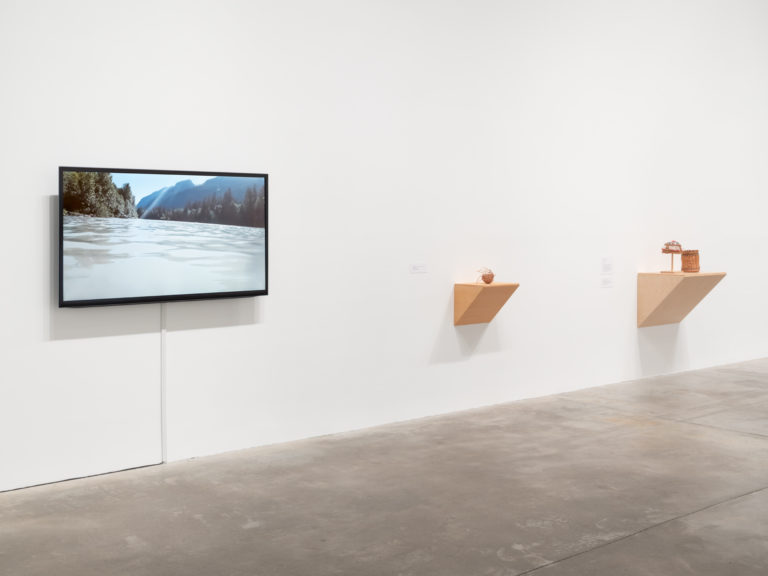
Left to right: Nabidu Taylor, Gwa’yi, 2018, video; Nabidu Taylor, Untitled, 2018, spruce root woven basket; Sara Siestreem, aretha franklin (1942-2018) reigns supreme, 2018, dance cap: Yellow Cedar Bark from Kodiak, Alaska (courtesy of Vickie Era), Black Berry and Beet Dye from Columbia River, Oregon, Red Cedar Bark from Kingcome, B.C. (courtesy of Marianne Nicolson), Sweet Grass (courtesy of Theresa Secord), Spruce Root from North Spit of Jordan Cove, Coos Bay, Oregon, Mud Dye from the place of beginning, Coos Bay, Oregon and glass and shell beads from Amazon.com; Sara Siestreem, up all night, 2018, Red Cedar Bark from Kingcome, B.C. (courtesy of Marianne Nicolson), Spruce Root from North Spit of Jordan Cove, Coos Bay, Oregon, Mud Dye from the place of beginning, Coos Bay, Oregon.
Photo: Rachel Topham Photography
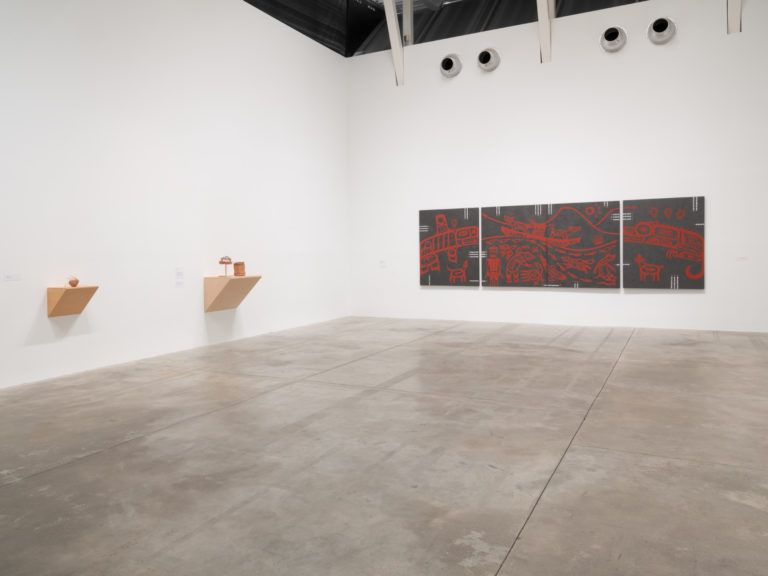
Left to right: Sara Siestreem, aretha franklin (1942-2018) reigns supreme, 2018, dance cap: Yellow Cedar Bark from Kodiak, Alaska (courtesy of Vickie Era), Black Berry and Beet Dye from Columbia River, Oregon, Red Cedar Bark from Kingcome, B.C. (courtesy of Marianne Nicolson), Sweet Grass (courtesy of Theresa Secord), Spruce Root from North Spit of Jordan Cove, Coos Bay, Oregon, Mud Dye from the place of beginning, Coos Bay, Oregon and glass and shell beads from Amazon.com; Sara Siestreem, up all night, 2018, Red Cedar Bark from Kingcome, B.C. (courtesy of Marianne Nicolson), Spruce Root from North Spit of Jordan Cove, Coos Bay, Oregon, Mud Dye from the place of beginning, Coos Bay, Oregon. Courtesy of the artist; Marianne Nicolson (‘Tayagila’ogwa), La’am ‘lawisuxw Yaxuxsan’s ‘Nalax -Then the Deluge of Our World Came, 2017, acrylic, mother of pearl and brass on wood.
Photo: Rachel Topham Photography
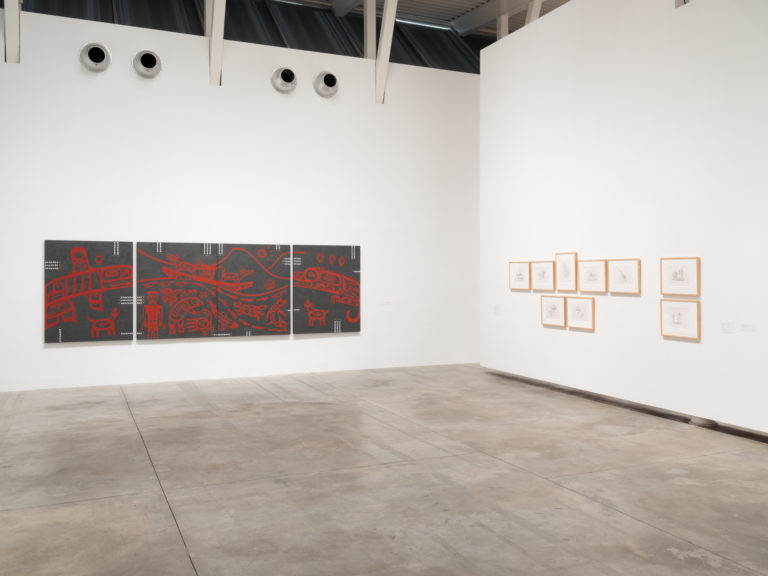
Left to right: Marianne Nicolson (‘Tayagila’ogwa), La’am ‘lawisuxw Yaxuxsan’s ‘Nalax -Then the Deluge of Our World Came, 2017, acrylic, mother of pearl and brass on wood; Marianne Nicolson (‘Tayagila’ogwa), The Two Brothers, The Wolf’s Clothing, The River System with Cranberries and Clover; An Otter Came Diving, The Robin, The Lark, The Woman on the Flats, The Farmer, all 2018, all graphite on vellum.
Photo: Rachel Topham Photography
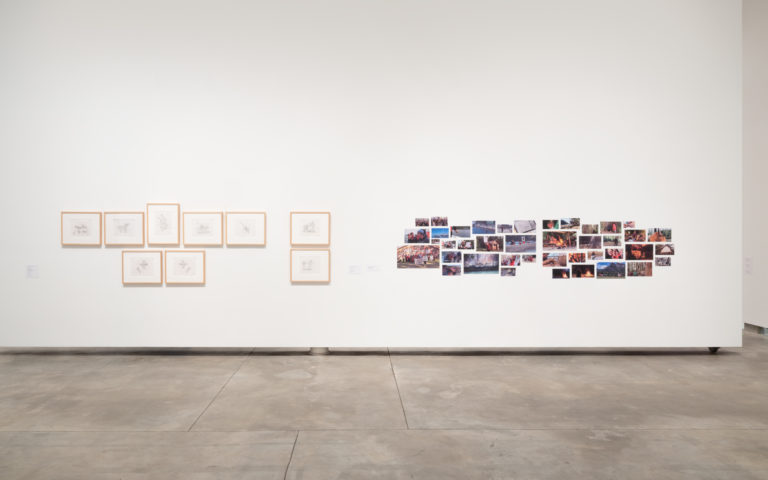
Left to right: Marianne Nicolson (‘Tayagila’ogwa), The Two Brothers, The Wolf’s Clothing, The River System with Cranberries and Clover; An Otter Came Diving, The Robin, The Lark, The Woman on the Flats, The Farmer, all 2018, all graphite on vellum; Lindsey Willie, A’axsila (to take care of), 2018, digital prints.
Photo: Rachel Topham Photography
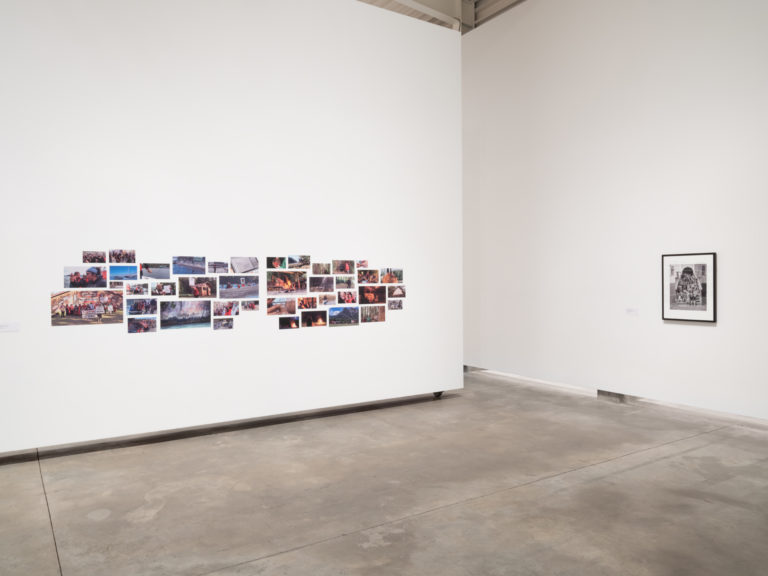
Left to right: Lindsey Willie, A’axsila (to take care of), 2018, digital prints; Marianne Nicolson (‘Tayagila’ogwa) and Althea Thauberger, Children in Gwa’yi, Heritage, August 4, 2018, archival inkjet print.
Photo: Rachel Topham Photography

Marianne Nicolson (‘Tayagila’ogwa) and Althea Thauberger, Children in Gwa’yi, Heritage, August 4, 2018, archival inkjet print.
Photo: Rachel Topham Photography

Left to right: A group of Musgamakw Dzawada’enuxw men poses in and around an enormous Dzunukwa feast dish in Gwa’yi (Kingcome Inlet), BC, ca. 1926. Photo: Albert Paull. Back row, left to right: Bill Wilson, Sam Webber, Jim Hamdzid, Alex Willie, Dick Webber, Harry Jack, William Webber, Willie Dawson, James King, Albert Dawson, Samuel James. Front row, left to right: Thomas King, Anderson Williams, Alfred Coon, photo wall vinyl. Courtesy of the Vancouver Public Library, VPL 1706; Unknown, 3 Feast Dish Lids, unknown dates, wood and paint. Collection of the Museum of Anthropology, The University of British Columbia; 1914 McKenna-McBride Royal Commission documents, digital prints affixed to wall.
Photo: Rachel Topham Photography
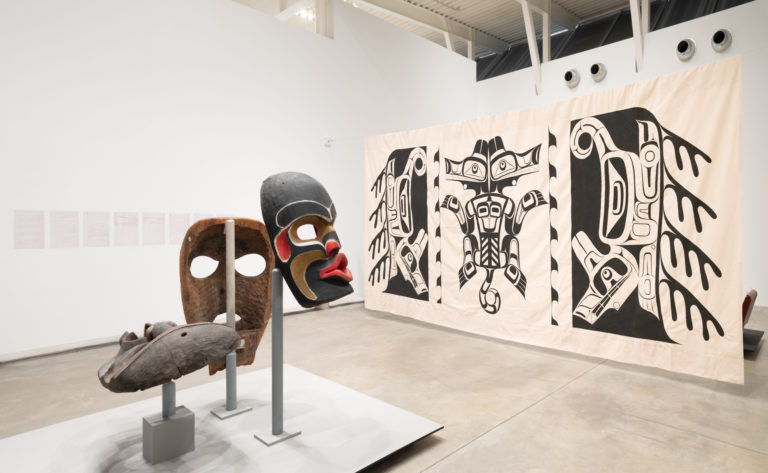
Left to right: 1914 McKenna-McBride Royal Commission documents, digital prints affixed to wall; Unknown, 3 Feast Dish Lids, unknown dates, wood and paint. Collection of the Museum of Anthropology, The University of British Columbia; William Wasden Jr., The Kingcome Inlet Wolves, 2018, Ła̱milas (dance curtain).
Photo: Rachel Topham Photography
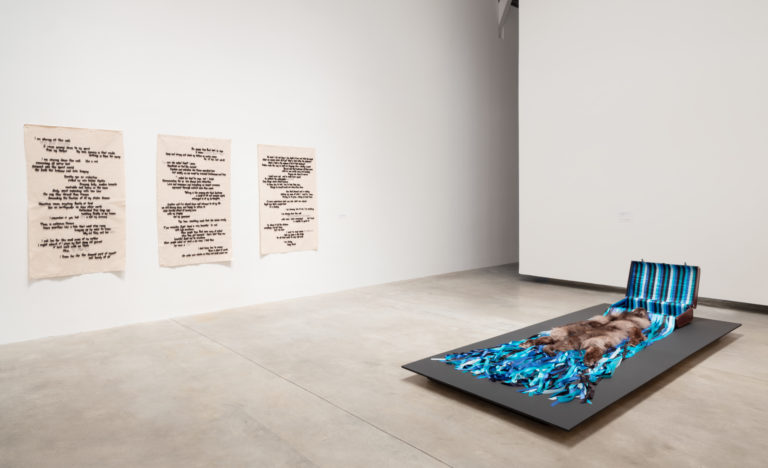
Left to right: Siku Allooloo, Akia, 2018, sealskin on canvas; Scott Benesiinaabandan, Under deep water: Ma’iingan bites my shoulder and we travel home, 2018, satin ribbon, wolf hide, aluminum, copper and suitcase.
Photo: Rachel Topham Photography
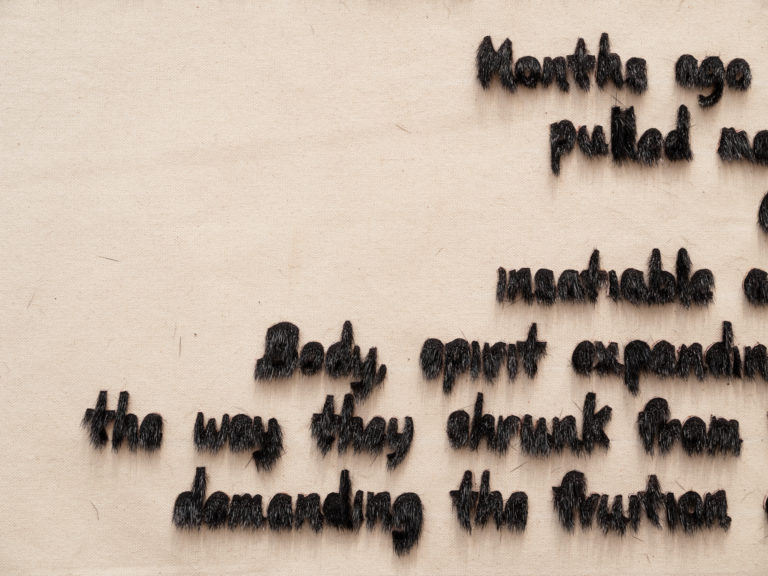
Siku Allooloo, Akia (detail), 2018, sealskin on canvas.
Photo: Rachel Topham Photography
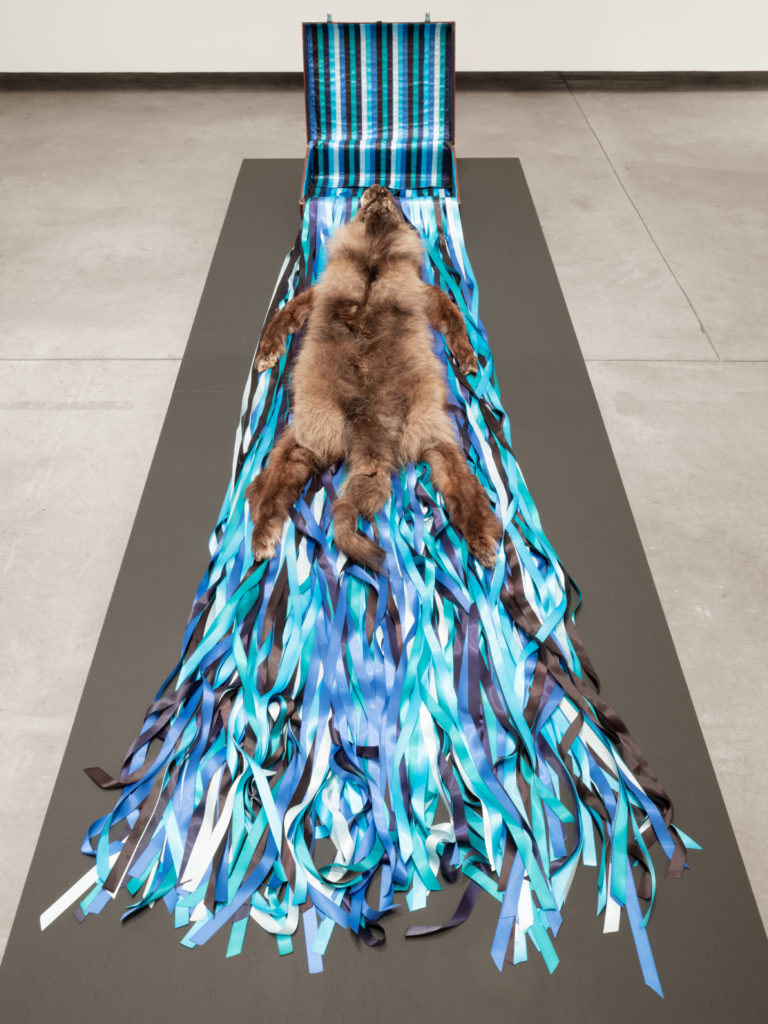
Scott Benesiinaabandan, Under deep water: Ma’iingan bites my shoulder and we travel home, 2018, satin ribbon, wolf hide, aluminum, copper and suitcase.
Photo: Rachel Topham Photography
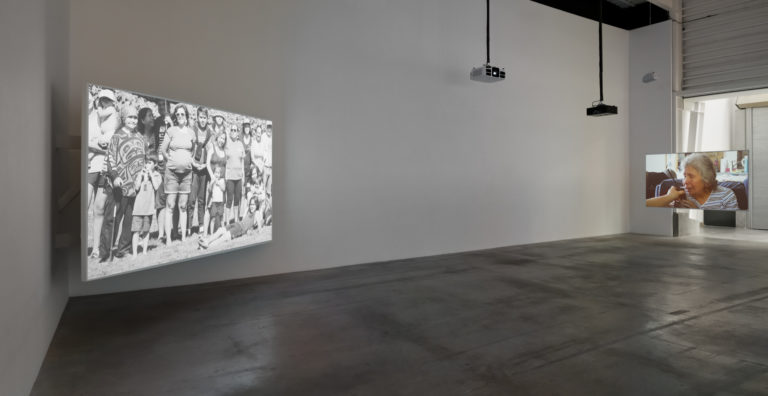
Marianne Nicolson (‘Tayagila’ogwa) and Althea Thauberger, Hexsa’a̱m (To be there always), 2018, 3 channel video installation with sound.
Photo: Rachel Topham Photography

Marianne Nicolson (‘Tayagila’ogwa) and Althea Thauberger, Hexsa’a̱m (To be there always), 2018, 3 channel video installation with sound.
Photo: Rachel Topham Photography
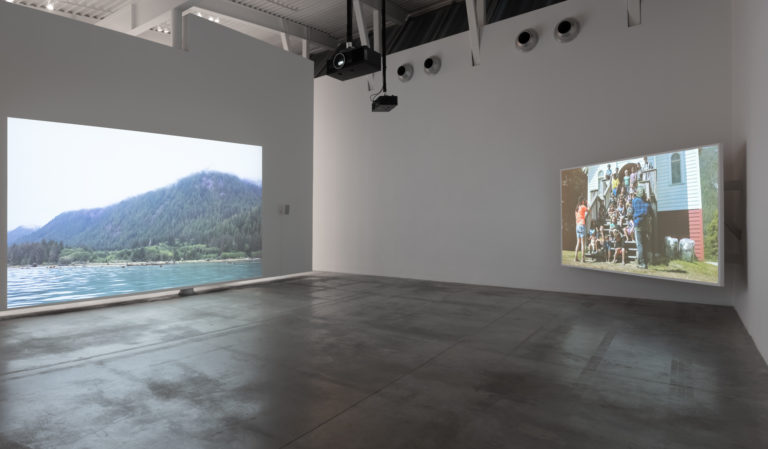
Marianne Nicolson (‘Tayagila’ogwa) and Althea Thauberger, Hexsa’a̱m (To be there always), 2018, 3 channel video installation with sound.
Photo: Rachel Topham Photography
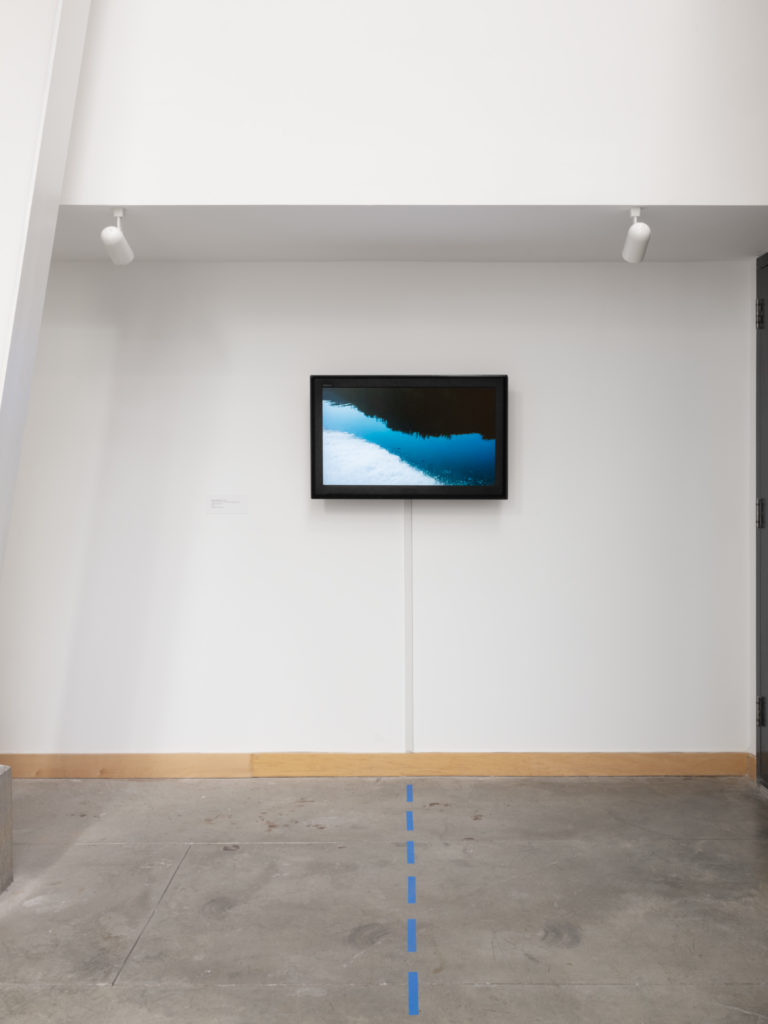
Kamala Todd, Known and Unknown Trails, from Digging Up the Last Spike, 2018, video.
Photo: Rachel Topham Photography
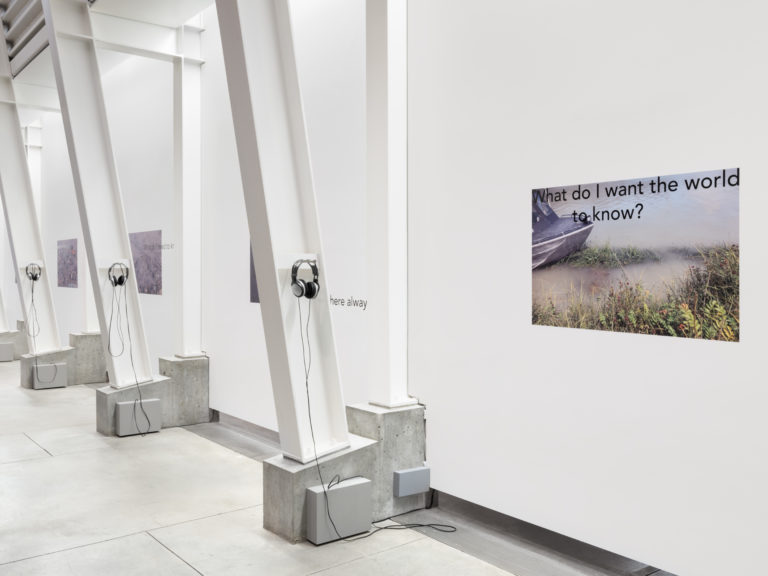
Diane Roberts, Six Questions, 2018, sound/video/photographic installation.
Photo: Rachel Topham Photography
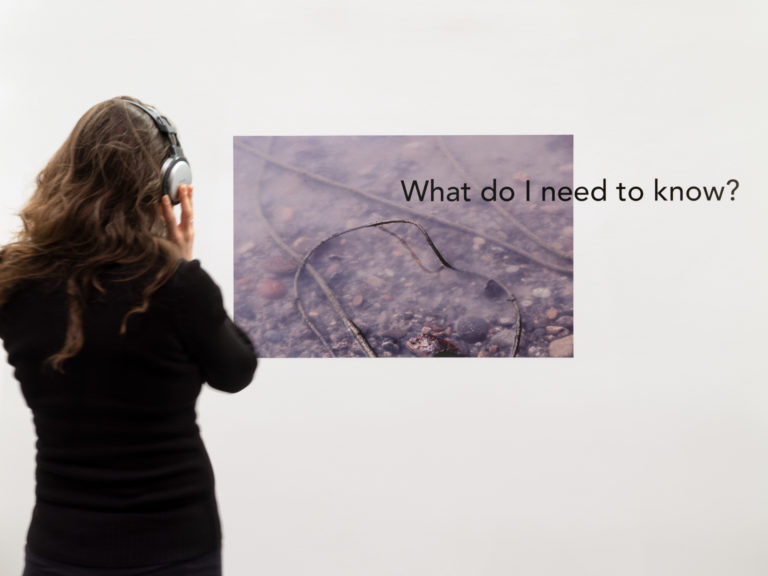
Diane Roberts, Six Questions, 2018, sound/video/photographic installation.
Photo: Rachel Topham Photography
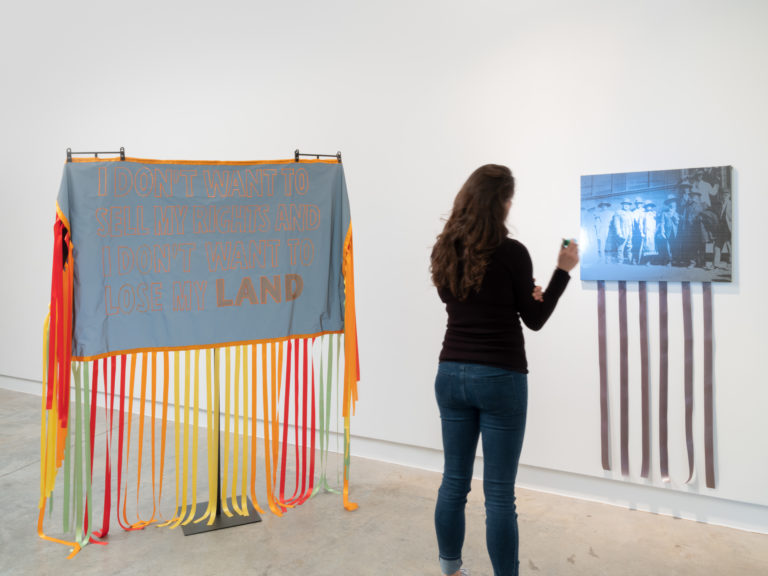
Tania Willard, Xyemstwécw–Respect for one another, 2018, 3M reflective fabric, satin and silk ribbon, flashlights, and laser etching, Shawl and print with ribbons.
Photo: Rachel Topham Photography
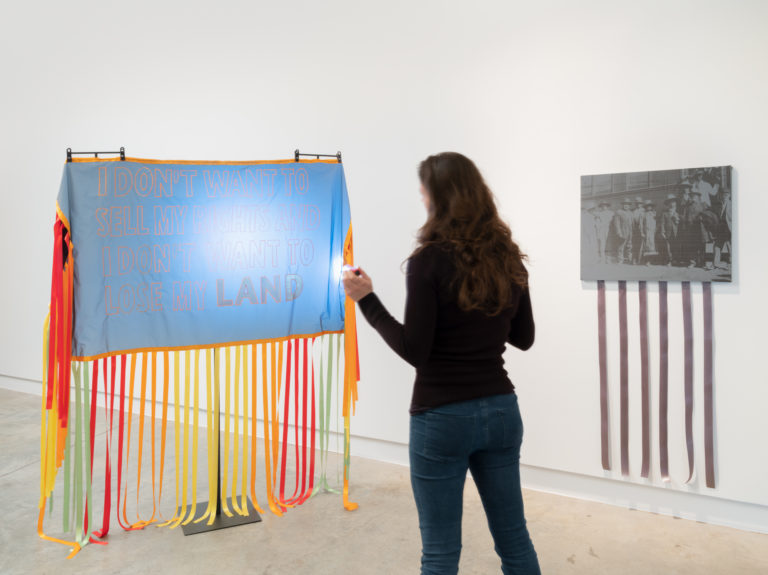
Tania Willard, Xyemstwécw–Respect for one another, 2018, 3M reflective fabric, satin and silk ribbon, flashlights, and laser etching, Shawl and print with ribbons.
Photo: Rachel Topham Photography
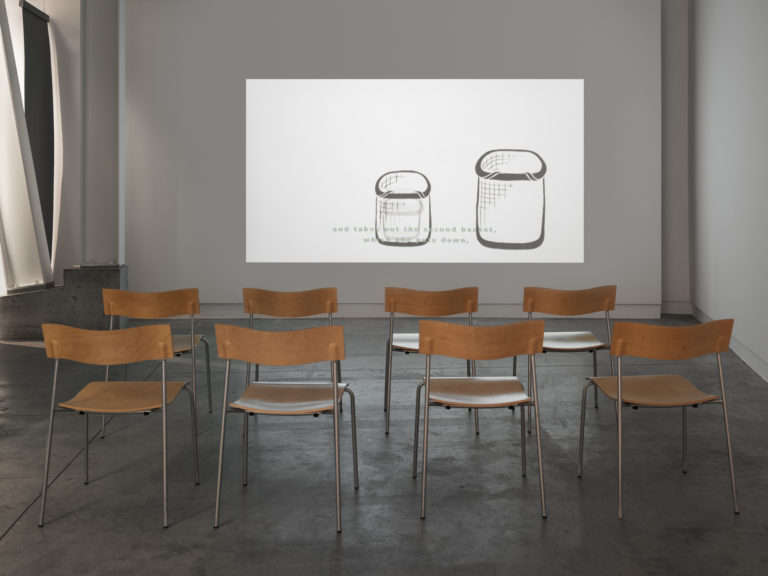
Jaymyn La Vallee and Juliana Speier, Ne’nakw (to return home), 2018, video.
Photo: Rachel Topham Photography
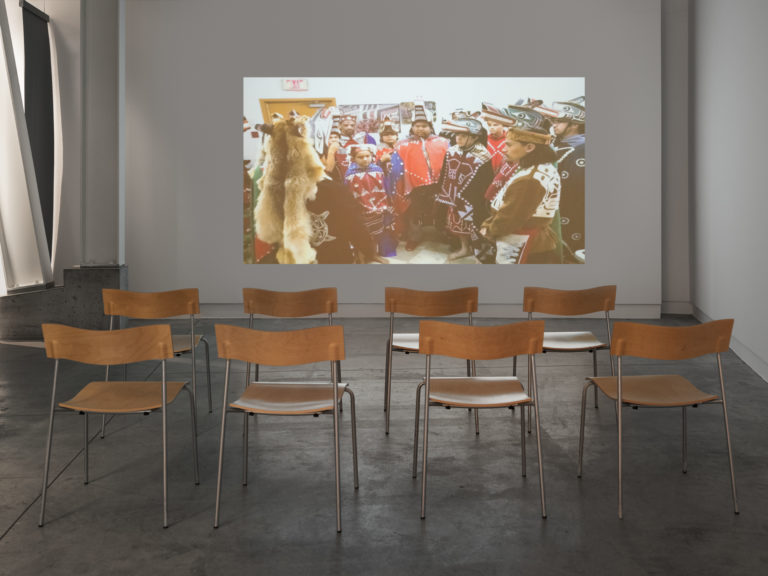
Darryll Dawson, We’re Still Here, 2018, video.
Photo: Rachel Topham Photography

Photo: Scott Benesiinaabandan.
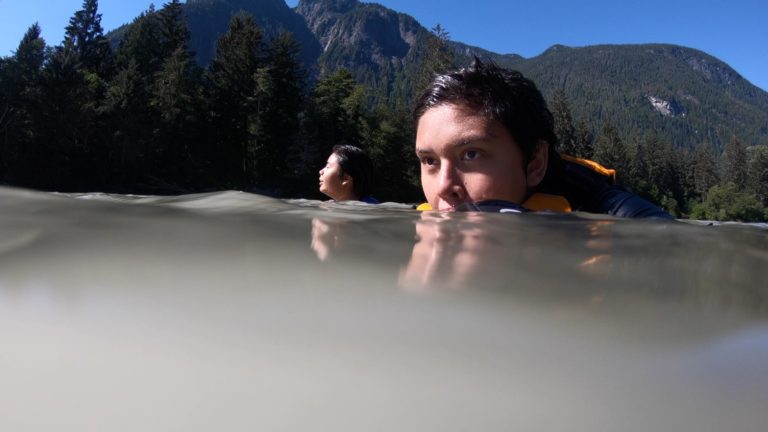
From Hexsa’a̱m: To Be Here Always, 2018, Photo: Nabidu Taylor.
-
Siku Allooloo
ArtistSiku Allooloo (Inuk/Haitian Taino) is a writer, facilitator and land-based educator from Denendeh (NWT) and Pond Inlet, NU. She also belongs to a Dene family and a strong lineage of storytellers/leaders on all three sides who have raised her to be close to the land. Allooloo has led resurgence-based work on the land in Denendeh since 2014, and in artistic collaborations with Indigenous artists across the country. Much of her work centres on decolonial ethics, resurgence and transformation. Her writing has been featured in Briarpatch Magazine, The Malahat Review, Nuit Blanche Toronto and Surrey Art Gallery Presents, among others. In 2018, she joined Gwaandak Theatre, Whitehorse as the Artistic Producer and was a guest faculty member at Banff Centre’s The Space Between Us: Technology, Collaboration and the Future. She is deeply honoured to be part of this project.
Read More
-
Scott Benesiinaabandan
ArtistScott Benesiinaabandan (Anishinaabe) is an intermedia artist who works primarily in photography, video, audio and printmaking. Benesiinaabandan has completed international residencies at Parramatta Artist Studios in New South Wales, Australia, Context Gallery in Derry, Northern Ireland and the Royal Melbourne Institute of Technology iAIR Residency, along with international collaborative projects in the United Kingdom. Benesiinaabandan is currently based in Montreal where he is completing a year-long Canada Council New Media Production grant through Obx Labs/AbTeC and the Initiative for Indigenous Futures, investigating virtual reality (VR) as a medium. He recently completed a National Film Board-Ford Foundation intensive residency around VR. In the past years, Benesiinaabandan has received grants from the Canada Council for the Arts, Manitoba Arts Council, Winnipeg Arts Council and Conseil des arts et des lettres du Québec. Benesiinaabandan has taken part in exhibitions across Canada and internationally, including Flatter the Land, Bigger the Ruckus at the Winnipeg Harbourfront Festival (2006), Subconscious City at the Winnipeg Art Gallery (2008), Ghost Dance at Ryerson Image Centre (2013) and The Fifth World at Mendel Art Gallery, Saskatoon (2015), as well as solo exhibitions unSacred at Gallery 1C03, University of Winnipeg (2011), Mii Omaa Ayaad/Oshiki Inendemowin, Sydney, Australia (2012), Blood Memories, Melbourne, Australia (2013) and little resistances at Platform Gallery, Winnipeg (2015). His work can be found in collections throughout Canada.
Read More
-
Lorna Brown
CuratorLorna Brown is a Vancouver-based visual artist, curator, writer and editor. Brown is a founding member of Other Sights for Artists’ Projects, and is an ongoing member of the Other Sights Producer team. She was the Director/Curator of Artspeak Gallery from 1999 to 2004, an artist-run centre focusing on the relationship between visual art and writing. Between 2015 and 2022, she was Acting Director/Curator at the Belkin, curating exhibition series such as Beginning With the Seventies that explored the relationship between art, archives and activism. Brown has exhibited her work internationally since 1984, and has taught at Simon Fraser University and Emily Carr University of Art and Design where she received an honorary doctorate of letters in 2015. Awards include the Vancouver Institute for the Visual Arts Award (1996) and the Canada Council Paris Studio Award (2000). Her work is in the collections of the Belkin, SFU Galleries, the National Gallery of Canada, the BC Arts Council, the Surrey Art Gallery and the Canada Council Art Bank.
Read More
-
Darryll Dawson Jr.
ArtistDarryll Dawson Jr. (Kwakwak’wakw) is a proud member of the Musgamakw Dzawada’nuxw First Nation of Kingcome Inlet. Growing up in Kingcome, his grandparents took him to numerous potlatches and feasts in Kingcome as well as with other tribes within the Kwakwak’wakw Nation. These experiences led him to learn dancing and singing at an early age. In 1993, he moved to Victoria and took his first Native Art class where he built the foundation of painting and design and started to develop his own style by age 17. In 2000, the Nanwakola Cultural Society commissioned him to design and paint a lamilas (ceremonial designed screen) for the Bighouse opening in Kingcome, where he also painted house posts carved by Master carver Beau Dick. Dawson apprenticed with Master carver Rande Cook and worked with Master carver John Livingston in Victoria, BC. His artistic inspirations are his late father Darryll Dawson Sr., his uncle Peter Dawson, William Wasden Jr., Beau Dick, Wayne Alfred, John Livingston, Rande Cook, Frances Dick and Marianne Nicolson. In 2013, Dawson moved back home to Kingcome. He currently works as a cultural co-ordinator in Kingcome to bring the community together to learn cultural practices, traditions, and ceremonies.
Read More
-
Jaymyn La Vallee
ArtistJaymym La Vallee (Sḵwx̱wú7mesh, Kwikwasut’inuxw and ‘Namgis) grew up in North Vancouver, BC on the Capilano Reservation. She is currently learning her Indigenous language, Kwakwala, and is completing her Bachelor of Education through the Indigenous Teacher Education Program (NITEP) at the University of British Columbia. La Vallee hopes to work with Indigenous children and young adults, teaching language and culture. She is passionate about food sovereignty and hopes to incorporate land-based learning values into her philosophy of teaching.
Read More
-
Marianne Nicolson
ArtistMarianne Nicolson (Kwakwa̱ka̱’wakw, Musga̱maḵw Dzawada̱’enux̱w First Nations, b. 1969) is an artist and activist of the Musga̱maḵw Dzawada̱’enux̱w Nations who are part of the Kwakwa̱ka̱’wakw (Kwak’wala speaking peoples) of the Northwest Coast. She is trained in both traditional Kwakwa̱ka̱’wakw forms and culture and contemporary gallery and museum-based practice. Her practice is multi-disciplinary, encompassing photography, painting, carving, video, installation, monumental public art, writing and speaking. She works as a Kwakwaka’wakw cultural researcher and historian, as well as an advocate for Indigenous land rights. She holds a BFA from the Emily Carr University of Art and Design (1996), an MFA (2000), MA in Linguistics and Anthropology (2005) and PhD in Linguistics and Anthropology with a focus on space as expressed in the Kwak’wala language (2013) all from the University of Victoria. Solo exhibitions include the Art Gallery of Greater Victoria (2008); Artspeak, Vancouver (2006); Esquimalt Municipal Hall (2004); Thunder Bay Art Gallery (2002); National Indian Art Centre, Hull (2001); Campbell River Public Art Gallery (2000) and Or Gallery, Vancouver (1992). Group exhibitions include the 17th Biennale of Sydney (2020); the Morris and Helen Belkin Art Gallery, Vancouver (2020); the Vancouver Art Gallery (2019-20); the National Gallery of Canada, Ottawa (2018-19) and the National Museum of the American Indian, New York (2017-19), among others. Major monumental public artworks are situated in her home territory of the Musga̱maḵw Dzawada̱’enux̱w First Nation, Vancouver International Airport, the Canadian Embassy in Amman, Jordan and the Canadian Embassy in Paris, France.
Following Nicolson’s Hexsa’a̱m: To Be Here Always, a 2019 project with the Belkin that functioned as research, material, media, testimony and ceremony to challenge the western concept that the power of art as limited to the symbolic, This Is An Emergency Broadcast (2023) is another moment to amplify Indigenous tradition.
Read More
-
Diane Roberts
ArtistDiane Roberts (American) is an interdisciplinary performance creator, director, dramaturge and cultural animator who has collaborated with theatre artists for the past thirty years. Her directorial and dramaturgical work has been seen on stages across Canada and her reputation as a mentor, teacher and community collaborator is nationally and internationally recognized. Through practice and teaching, Roberts has developed her voice as a cultural leader—cultivating and promoting a vision for performance that encourages Indigenous ways of knowing as a stepping-stone to authentic creative expression. This vision is bolstered by the creation of innovative projects inspiring trans-disciplinary and trans-cultural collaborations. Roberts’s Arrivals Personal Legacy Project (www.arrivalslegacy.com) developed during her seven-year tenure as Artistic Director of Urban Ink productions and has yield interdisciplinary works across Canada, throughout the Americas, in the UK, Europe and the Caribbean. Roberts is also a founding member of Obsidian Theatre and backforward collective in Toronto, Associate Artist of lbs/sq” (Toronto) and co-founder and Artistic Director of Boldskool Productions (Vancouver, Montreal) with playwright Omari Newton. Roberts is currently pursuing her PhD in Interdisciplinary Studies at Concordia University.
Read More
-
Sara Siestreem
ArtistSara Siestreem (Hanis Coos) is a multi-disciplinary artist and educator working in painting, photography, printmaking, sculpture and traditional Indigenous weaving based in Portland, OR. Siestreem’s artistic practice engages in critical issues of sovereign Indigenous rights, Indigenous knowledge systems and ecology. Siestreem’s current project of learning, practicing and teaching traditional Indigenous basket weaving stems from her work on institutional critique and access to historic collections of Coos material and archives. Through engaging in these traditional practices, Siestreem invokes the complex histories and embodied knowledges of the communities and peoples who have also woven these baskets across eras. Siestreem received her MFA from the Pratt Art Institute in Brooklyn, NY, and is the recipient of numerous grants, scholarships and residencies. Siestreem’s work has been shown across the US and BC, including at the Portland Art Museum in Portland, OR; The Museum of Natural and Cultural History at the University of Oregon; The Art Gallery of Greater Victoria in Victoria, BC; The Museum of Northwest Art in Seattle, WA; among many other spaces. She is currently represented by the Augen Gallery in Portland, OR.
Read More
-
Juliana Speier
ArtistJuliana Speier is an emerging visual artist who recently graduated from high school and plans to attend the University of Victoria for biology and arts. The youth artist/activist is of mixed heritage and comes from the non-treaty Dzawada’enuxw First Nation of Kingcome Inlet, BC. Her interests lie in painting and photography. Her work predominantly involves themes of nature, using it as a connection point for education on issues relating to both her Indigenous heritage and the environment. In 2017, Speier was part of an Indigenous emerging artist project with the Pacific Peoples’ Partnership, and in 2019 she will travel to Brazil for five months to volunteer at IPBIO, a biological research station in one of the national parks.
Read More
-
Nabidu Taylor
ArtistNabidu Taylor (Musgamagw Dzawada’enuxw) is an emerging artist who was raised in the Musgamagw Dzawada’enuxw First Nation, and is currently based in Victoria, BC. She had her first training with elders in traditional media and has gone on to work in photography and video. Her work explores relationships between contemporary youth and their ancestral territory and culture. She is completing a program in environmental tourism and she has an extensive photo practice on Instagram @Nabidu
Read More
-
Althea Thauberger
ArtistThauberger is an artist and filmmaker and an Associate Professor of Visual Art at the University of British Columbia. Her artistic work involves collaborative research and is primarily concerned with the relationship between community narratives and geopolitical histories. Thauberger has produced and exhibited her work internationally including recent exhibitions at the Contemporary Art Gallery in Vancouver and the Kaunas Biennial in Lithuania.
Read More
-
Kamala Todd
ArtistKamala Todd is Métis-Cree with roots in St. Paul de Métis Settlement and Whitefish Lake Alberta. She is grateful to live in the beautiful homelands of the hən̓q̓əmin̓əm̓- and Skwxwú7mesh-speaking people, also known as Vancouver, where she was born and raised. Todd is a community planner, filmmaker, writer and curator with an MA in cultural geography (UBC). For six years, she was the City of Vancouver’s Aboriginal Social Planner (2000-06). Todd’s film credits include Indigenous Plant Diva, Cedar and Bamboo, RELAW: Living Indigenous Laws and Sharing our Stories: The Vancouver Dialogues Project. In 2015, she created a video series about Indigenous law for the University of Victoria’s Indigenous Law Research Unit. Todd writes and directs for children’s television, including the Indigenous science series Coyote’s Crazy Smart Science Show on APTN. She is the author of “This Many-storied Land” published in In This Together: Fifteen Stories of Truth and Reconciliation (2016). She recently completed a report for the Vancouver Parks Board entitled Truth-Telling: Indigenous Perspectives on Working with Municipal Governments (2017). Todd has curated special events and exhibits for such groups as Indian Summer Festival, David Suzuki Foundation and the Roundhouse Community Arts and Recreation Centre. She is the proud and grateful mother of Kai and Anostin, emerging artists and storytellers themselves.
Read More
-
William Hiłamas Edward Wasden Jr.
ArtistWilliam Hiłamas Edward Wasden Jr. Wax̱a̱widi “Canoes Come to His Shore” was born at ʼYa̱lis (Alert Bay), BC on October 14, 1967, and is a member of the ‘Na̱mg̱is Nation “Nimpkish Valley Tribe”. Wasden has always been fascinated with the artwork and style of his Kwakwa̱ka̱’wakw and belongs to many respective tribes within the Kwakwa̱ka̱’wakw. Wasden carries many names and dances that have been bestowed on him by various sides of his families. He is a member of the most sacred ‘Mamaḵ̓a “Shaman Dance Society” and Hamat̓sa “Cannibal Dance Society”, among others. Wasden is also a descendant of the Cook, Wanukw, Hunt, Alfred, Harris and Innis families; tracing his ancestry to the Tłingit of Alaska and the Mowachaht of the West Coast. The last Kwakwa̱ka̱’wakw Song Keeper/Composer/Historian Chief Hiwaki̱lis Tom Willie “Mackenzie” and wife Matriarch ‘Ma̱lidi Elsie (nee Wamiss) daughter of Chief Helagi̱lis Tom “Patch” Wamiss were Wasden’s mentors. From them Wasden learned numerous Kwakwaka’wakw traditional songs and how to compose them. He continues to teach all that he knows to the next generation. Wasden also led the G̱wa’wina Dancers Cultural Society, an adult professional dance group intending to share authentic Kwakwa̱ka̱’wakw culture and teachings. Presently, Wasden is the Cultural Coordinator and teaches at Ḵ̓aḵ̓udłat̓s “House of Learning,” a First Nation’s School at Quatsino, BC.
Read More
-
Tania Willard
ArtistTania Willard (Secwépemc Nation, b. 1977) is an artist and curator of mixed Secwépemc and settler ancestry and beginning January 2026, the Belkin’s Director/Curator. Willard’s research and creative processes are informed by land-based and community-engaged art practices, connections to culture and family, and intersections between Aboriginal and other cultures. Often focusing on Secwépemc aesthetics, language and land, Willard explores the shifts and tensions between ideas of the contemporary and the traditional. Willard centres art as an Indigenous resurgent act through her collaborative projects and her support of language revitalization efforts in Secwépemc communities. Willard’s personal curatorial projects include BUSH gallery, a conceptual space for land-based art and action led by Indigenous artists. Willard received an MFA from UBC Okanagan in 2018. Her work has been the subject of solo exhibitions at Kamloops Art Gallery; Burnaby Art Gallery; and SFU Audain Gallery, Vancouver. Her work has been featured in group exhibitions at FotoFocus Biennial; Cincinnati Arts Centre; Haus der Kulturen der Welt, Berlin Germany; Morris and Helen Belkin Art Gallery; and Open Studio Contemporary Printmaking Centre, Toronto. Willard has curated numerous exhibitions, including the traveling exhibition Beat Nation: Art, Hip Hop and Aboriginal Culture that began at the Vancouver Art Gallery (co-curated with Kathleen Ritter); Exposure: Native Art and Political Ecology at the IAIA Museum of Contemporary Native Arts, Santa Fe; Unceded Territories: Lawrence Paul Yuxweluptun at the Museum of Anthropology (co-curated with Karen Duffek); and CUSTOM MADE at Kamloops Art Gallery. She was a curator in residence with grunt gallery and Kamloops Art Gallery. Willard was selected as one of five curators for a national scope exhibition in collaboration with Partners in Art and National Parks. She received the 2016 Hnatyshyn Foundation Award for Curatorial Excellence in Contemporary Art, the 2020 Shadbolt Foundation VIVA Award, and was named a 2022 Forge Project Fellow. Her work with BUSH gallery was recognized through the Ruth Foundation for the Arts Future Studies award (2022). Willard is an Assistant Professor in the Faculty of Creative and Critical Studies and Gallery Director at UBC Okanagan in Syilx territories (Kelowna, BC).
Read More
-
Lindsey Mae Willie
ArtistLindsey Mae Willie (Musgamagw Dzawada’enuxw) lives and works in Kingcome Inlet, BC. Her filmmaking explores Indigenous identities, particularly by youth who are hungry to learn their ancestral knowledge and wisdom from their elders. Willie explores the revitalization of her community’s language, culture, and arts, and in doing so, helps to recover and sustain Musgamagw Dzawada’enuxw artistic heritage. Willie’s practice as a documentary filmmaker and storyteller has evolved from eleven years of professional work behind the camera as both camera operator and editor. She has worked with CTV, Aboriginal Peoples Television Network (APTN), City TV, and OMNI Television. In 2012, Willie was awarded the Aboriginal Peoples Television Network’s Emerging Director Award and produced her first film, The Potlatch Keepers (2014), which aired on APTN. As an artist, activist and researcher, Willie works as the Traditional Land and Governance Coordinator for the Dzawada’enuxw First Nation. In this role, she has helped develop a governance engagement strategy to enhance the capacity of the Dzawada’enuxw First Nation to assert authority over its territory while engaging in the reconciliation process. Willie seeks out her culture by listening to her elders, and through hunting, fishing, traversing the wilderness, constructing traditional shelters and harvesting plants.
Read More
Funders
Hexsa’a̱m: To Be Here Always takes place as part of Mirrored In Stone, a project commissioned by Cineworks and the Morris and Helen Belkin Art Gallery at the University of British Columbia in partnership with the Dzawada̱'enux̱w First Nation. Cineworks gratefully acknowledges the generous support of the Canada Council for the Arts New Chapter fund, British Columbia Arts Council Youth Engagement Program and the annual assistance of the Canada Council for the Arts, British Columbia Arts Council, City of Vancouver and Province of British Columbia. The Belkin Gallery gratefully acknowledges the generous support of the Vancouver Foundation, Canada Council for the Arts, British Columbia Arts Council, our Belkin Curator’s Forum members and the Department of Canadian Heritage Young Canada Works Program.
Mirrored In Stone is one of the 200 exceptional projects funded through the Canada Council for the Arts’ New Chapter program. With this $35M investment, the Council supports the creation and sharing of the arts in communities across Canada.
Cineworks and the Belkin Gallery pay special respect to the xʷməθkʷəy̍əm (Musqueam), Sk̠wx̠wú7mesħ (Squamish) and Səl̓ílwətaʔ/Selilwitulh (Tsleil-Waututh) First Nations on whose unceded traditional territories much of the work facilitating this project has been undertaken.
Related
-
Publication
2020
Beginning with the Seventies
 Exhibition catalogue from the four exhibitions associated with the Beginning with the Seventies project at the Belkin: GLUT (12 January-8 April 2018), Radial Change (22 June-12 August 2018), Collective Acts (4 September-2 December 2018) and Hexsa'am: To Be Here Always (11 January-7 April 2019), edited by Lorna Brown, Greg Gibson and Jana Tyner. [more information and purchase]
Exhibition catalogue from the four exhibitions associated with the Beginning with the Seventies project at the Belkin: GLUT (12 January-8 April 2018), Radial Change (22 June-12 August 2018), Collective Acts (4 September-2 December 2018) and Hexsa'am: To Be Here Always (11 January-7 April 2019), edited by Lorna Brown, Greg Gibson and Jana Tyner. [more information and purchase] -
Tour
19 January - 7 April 2019 from 12:30-4 pm
Tours: Hexsa’a̱m: To Be Here Always
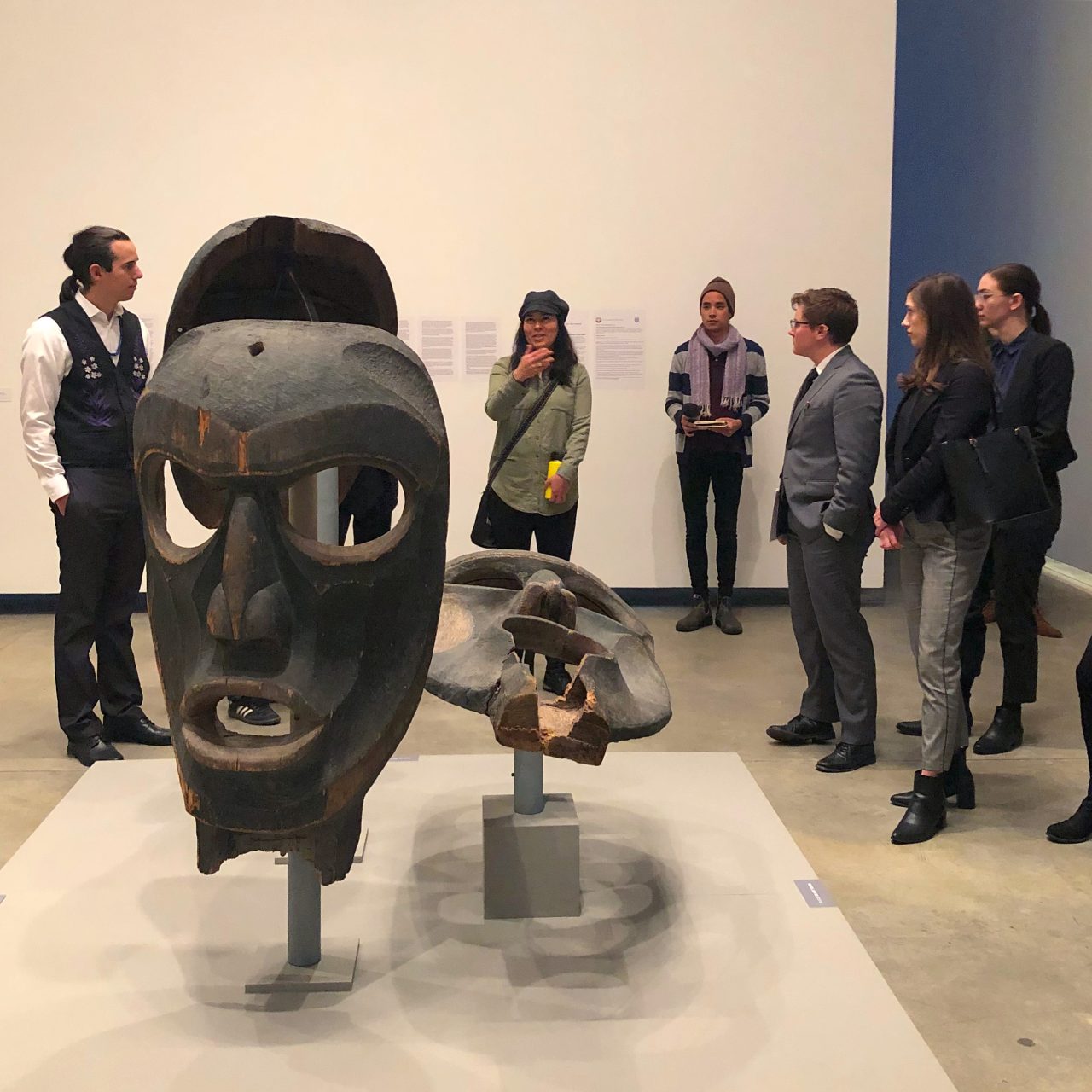
Tours and discussions can be arranged from Tuesday to Friday for groups and classes, lasting 50 minutes and longer. For details and information, email naomi.sawada@ubc.ca or call 604-822-3640. Drop-in tours are available on Saturday and Sunday between 12:30 and 4 pm. Drop-in tours are casual and conversational, lasting about 15-30 minutes. These can be arranged the day-of at the Reception Desk or ahead of time by calling 604-822-4883.
Photo: Scy Krogh.
[more] -
Event
3 Apr 2019; 2 pm
Concert at the Belkin: Hexsa’a̱m
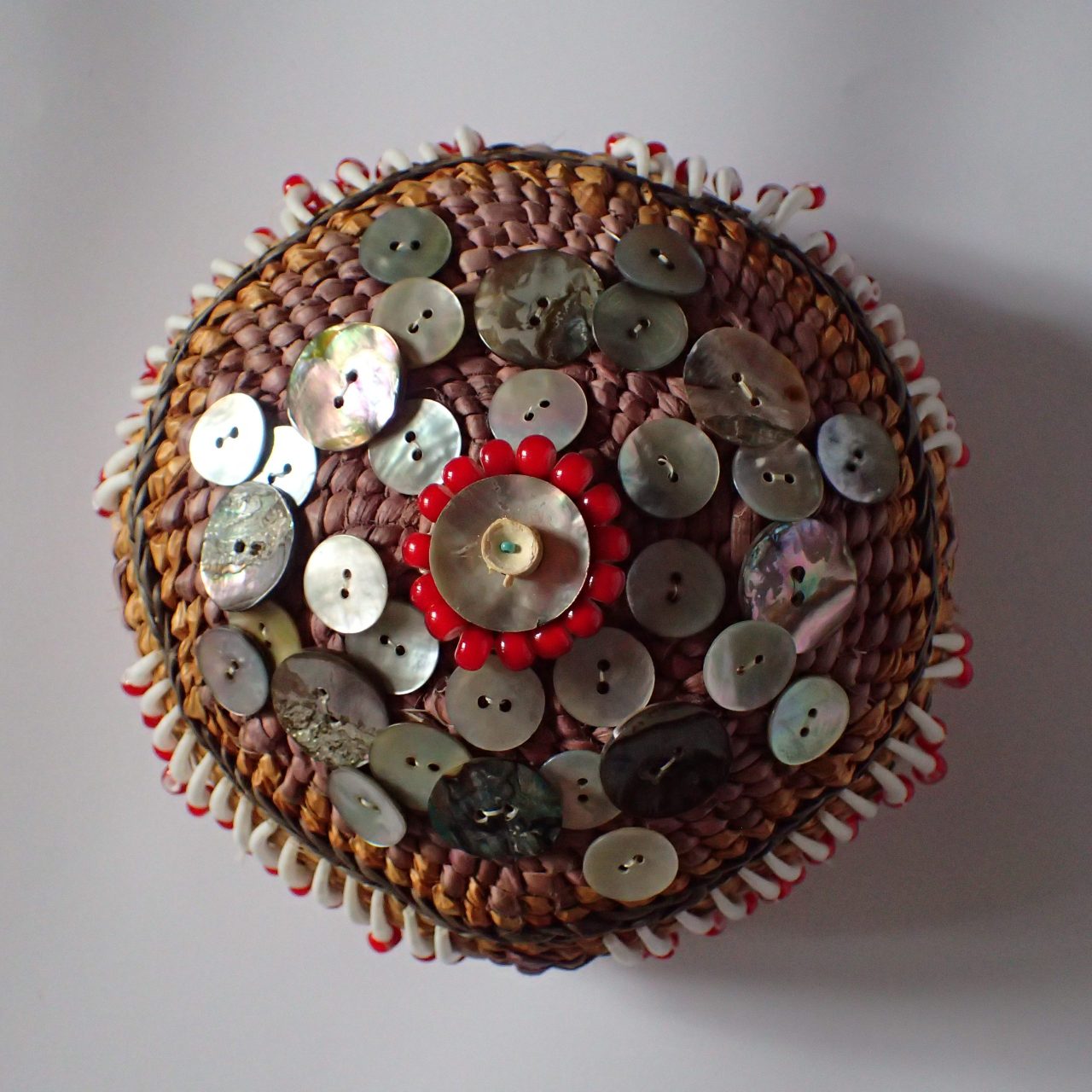
Once again, we are pleased to welcome the UBC Contemporary Players to the Belkin Art Gallery for a concert inspired by the exhibition Hexsa’a̱m: To Be Here Always. Led by Director Paolo Bortolussi, this graduate and undergraduate student ensemble from the UBC School of Music will animate the Gallery for an afternoon program celebrating themes from the exhibition. The program will feature an original composition by Leslie Opatril who worked closely with artists Marianne Nicolson and Althea Thauberger. Opatril is a Master's student at the UBC School of Music working under the supervision of Dorothy Chang.
Admission is free. [more] -
Event
28 Feb 2019 from 3-6 pm, Panel + Reception
Symposium: Practices of Resistance
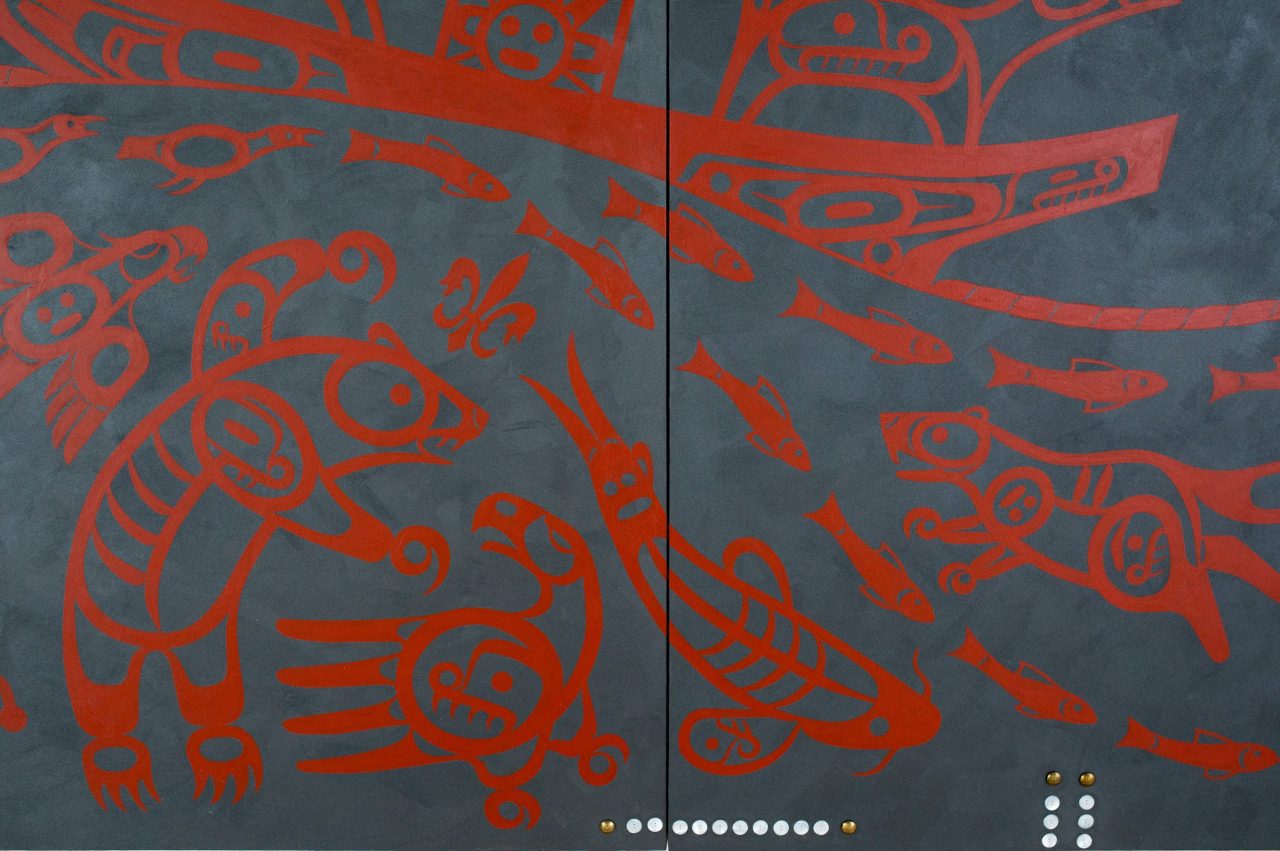
Hexsa'a̱m: To Be Here Always brings together new works by Indigenous artists who make work addressing the threats posed by Canadian colonial capitalism to their land, water and ecologies. Symposium speakers Teresa Montoya, Marianne Nicolson and Tania Willard will address issues raised by the continuing struggles for Indigenous sovereignty and strategies for art practiced as part of their communities' resistance against settler colonialism and ecological destruction. All three will be speaking from their experience as artists, activists and researchers whose practices are inextricably linked to the political and cultural life of their communities.
[more] -
Exhibition
4 September 2018 – 2 December 2018
Beginning with the Seventies: Collective Acts
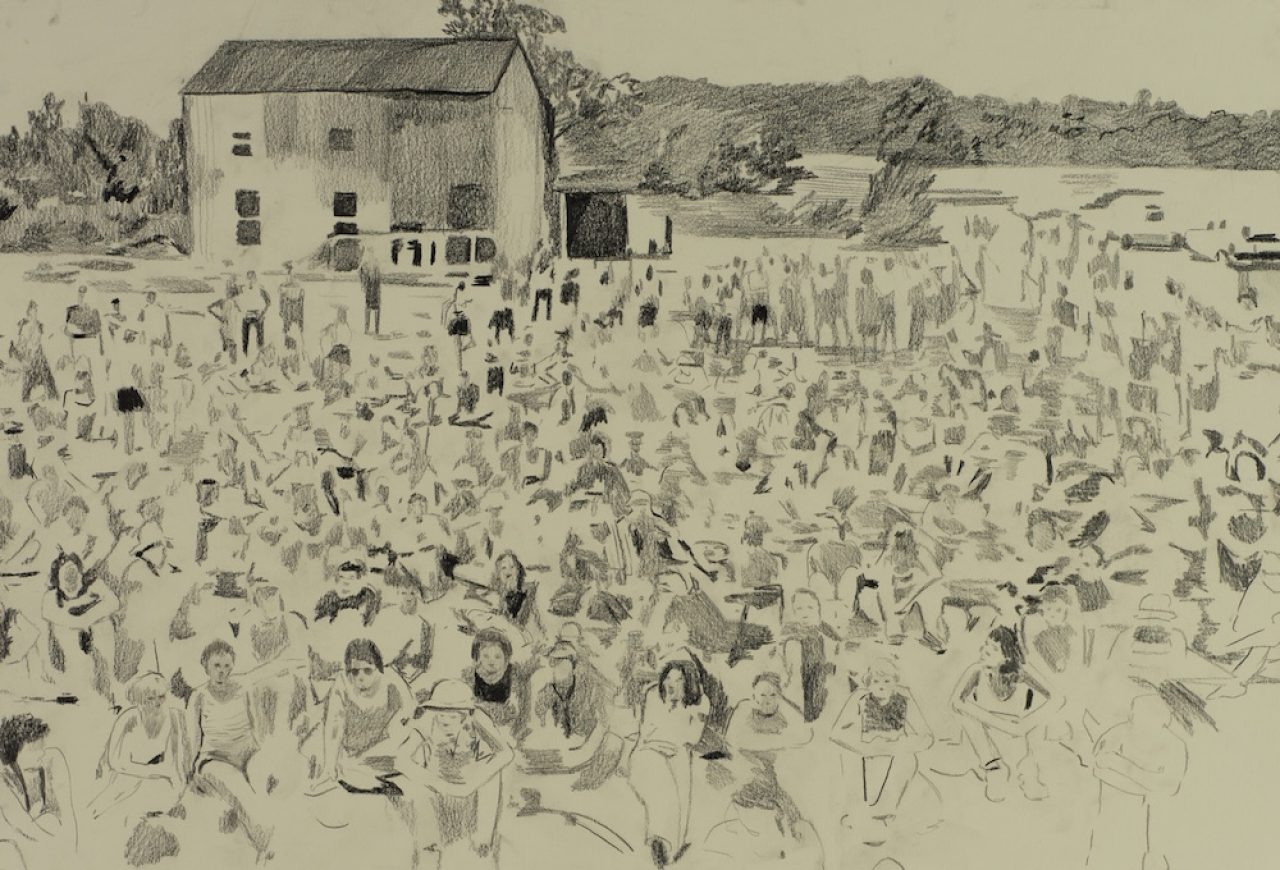
Collective Acts taps into the generative potential of archival research by artists into experiments with collective organizing and cooperative production, presenting new work by Dana Claxton, Jeneen Frei Njootli and the ReMatriate Collective, Christine D’Onofrio and Heather Kai Smith, alongside work by Salish Weavers Guild members Mary Peters, Adeline Lorenzetto and Annabel Stewart. Beginning with the Seventies: Collective Acts is curated by Lorna Brown and is the third of four exhibitions based upon the Belkin Art Gallery’s research project investigating the 1970s, an era when social movements of all kinds – feminism, environmentalism, LGBTQ rights, Indigenous rights, access to health services and housing – began to coalesce into models of self-organization that overlapped with the production of art and culture. Noting the resurgence of art practice involved with social activism and an increasing interest in the 1970s from younger producers, the Belkin has connected with diverse archives and activist networks to bring forward these histories, to commission new works of art and writing and to provide a space for discussion and debate.
[more] -
Exhibition
12 January 2018 – 8 April 2018
Beginning with the Seventies: GLUT
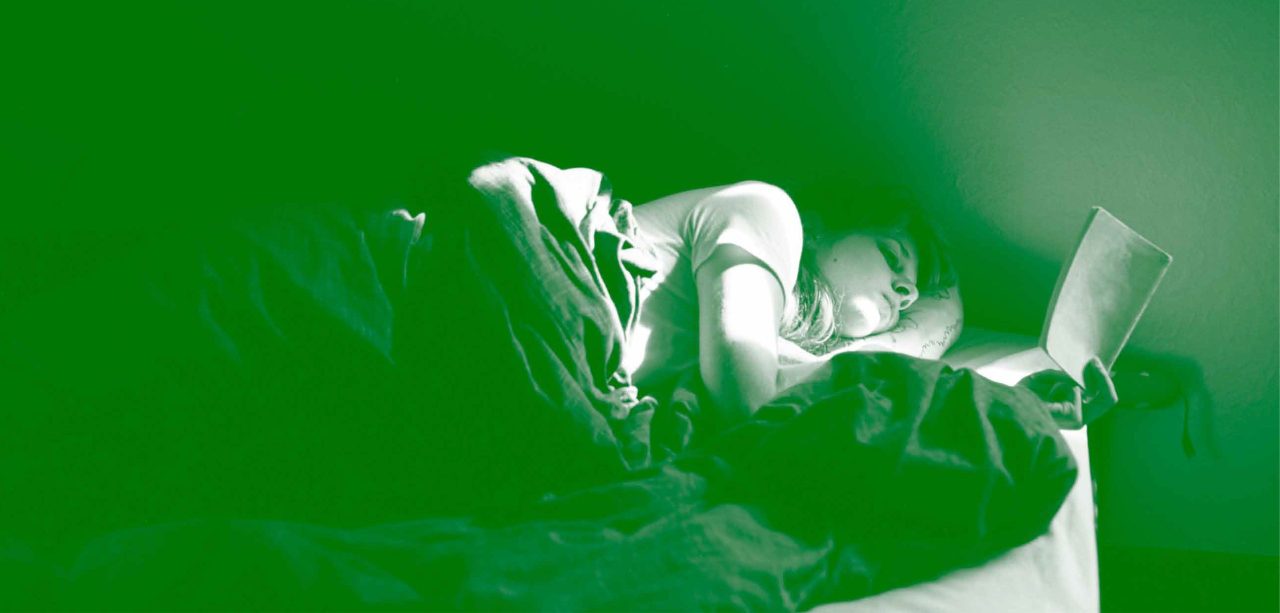
Celebrating the excessive abundance of the archive, Beginning with the Seventies: GLUT is concerned with language, depictions of the woman reader as an artistic genre and the potential of reading as performed resistance.
[more] -
Exhibition
22 June 2018 – 12 August 2018
Beginning with the Seventies: Radial Change
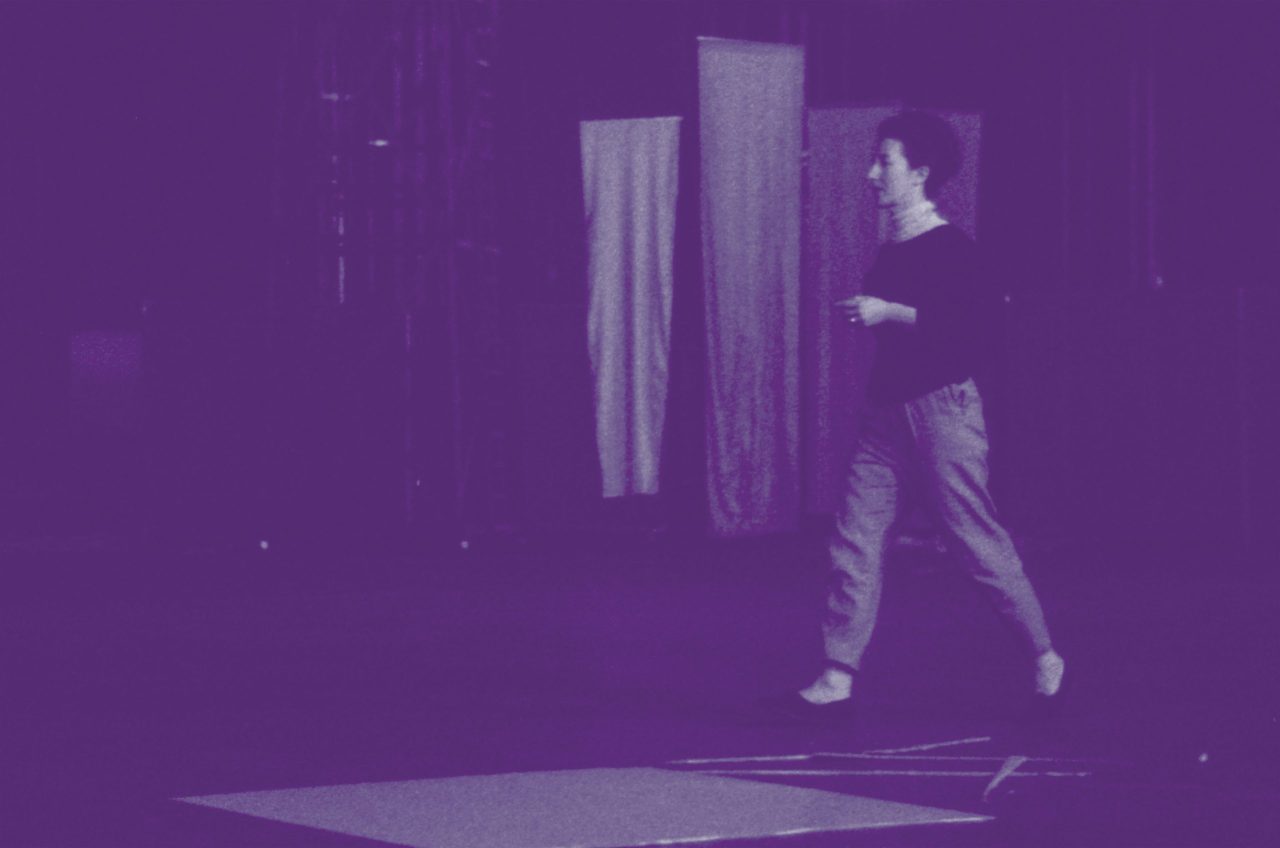
How is an archive formed? Memories of performance often exceed the containment of the document, whether photography, film, prop or testimony. As communities disperse and regroup over time, figures may slip away from the centre. Circling around the embodied archive, the exhibition Radial Change is drawn from the title of a dance work by Helen Goodwin. The elusive histories of Goodwin’s choreography and her influence on the interdisciplinary art scene of the 1970s are explored in new installation works by Evann Siebens and by Michael de Courcy.
[more] -
News
28 Aug 2018
Call for Contributions to the Intuition Commons
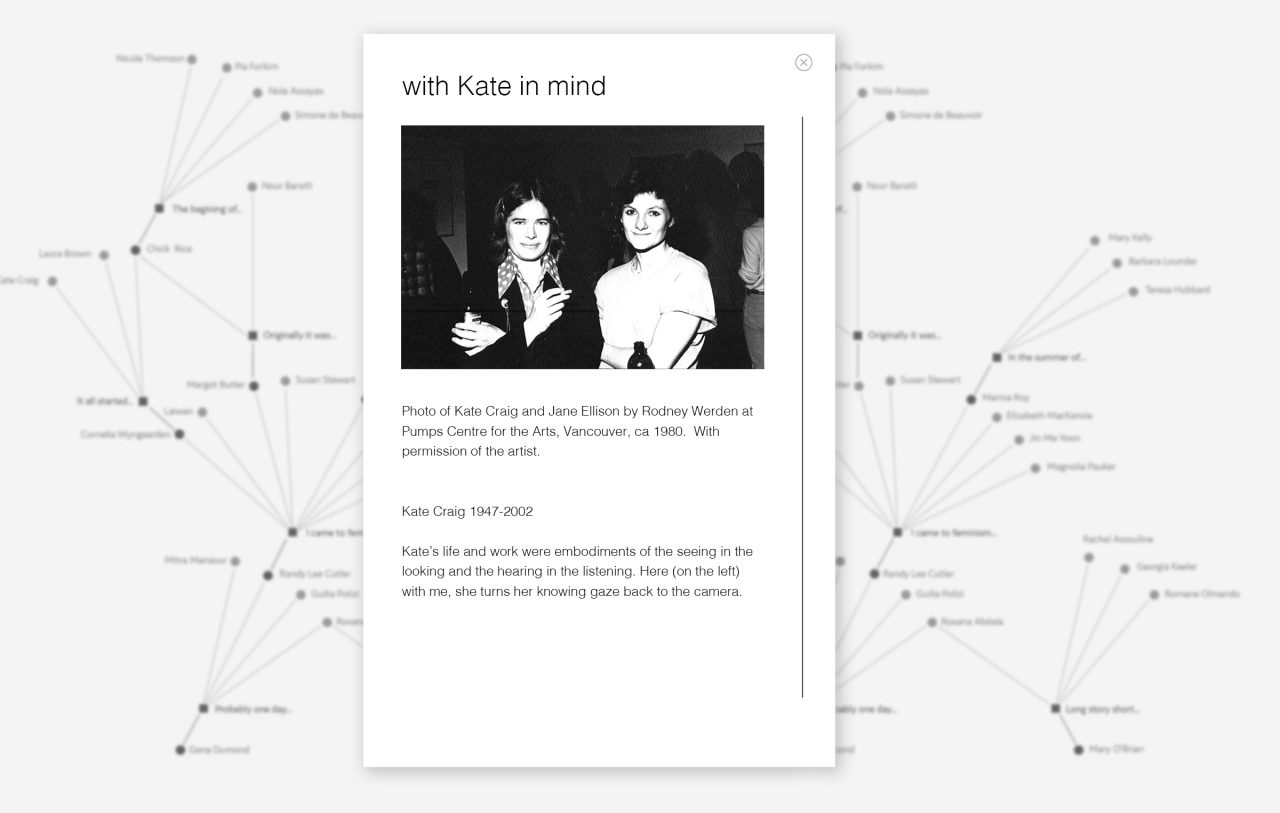
As part of Collective Acts, we invite you to visit the newly-launched Intuition Commons, a space that aims to facilitate an archive of female influences in creative practice that lie outside of conventional citations.
[more] -
Event
Fri 6 March 2020 at 5 pm
Sat 7 March 2020 at 1 pm
Book Launch and Symposium: Beginning with the Seventies
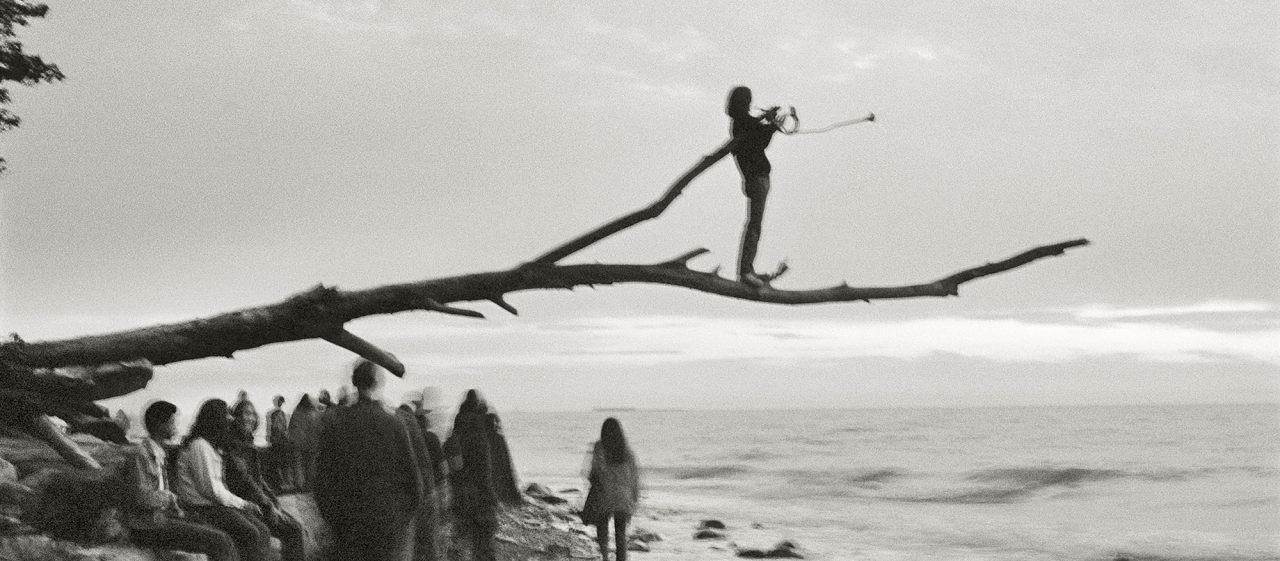
Please join us for a book launch and series of attendant events - readings, discussions, lectures - to celebrate the publication of our Beginning with the Seventies project. The program will take place on Friday, March 6 at the Musqueam Cultural Centre and Saturday, March 7 at the University Centre. Presenters include Lorna Brown, Lisa Darms, Thea Quiray Tagle, Kate Hennessy, Sarah Hunt, Yaniya Lee, Jaqueline Mabey, Allyson Mitchell and Lisa Robertson.
[more] -
Event
Critical Image Forum Dialogue Series: Marianne Nicolson

As part of Critical Image Forum's Dialogue Series, this online conversation with Althea Thauberger, Musgamakw Dzawada’enuxw artist and activist Marianne Nicolson helps us understand how particular photographic acts, although initiated by Canadian colonial photographers, were used, by those depicted, as opportunities for assertions of political, cultural and territorial sovereignty during the potlatch ban in the early twentieth century.
[more] -
Research Project
2021 - Ongoing
Critical Image Forum: Research in Photography and Expanded Documentary

Critical Image Forum is a research project that focuses on the political, ethical, aesthetic and social dimensions of expanded documentary practices. The Forum's primary medium of research is photography, with an interest in how the proliferation of moving images, performance, sound and digital networks have challenged and complicated the veracity of the visual document.
[more] -
Event
25 Mar 2017, 1 pm
Artist Talk: Marianne Nicolson
Join artist Marianne Nicolson who will talk about two works in the exhibition To refuse/To wait/To sleep, Tunics of the Changing Tide (2007) in the Walter C. Koerner Library and The Sun is Setting on the British Empire (2016) on the facade of the Belkin Art Gallery. Watch the talk online.
[more] -
Exhibition
2017 – 2020
Marianne Nicolson: The Sun is Setting on the British Empire
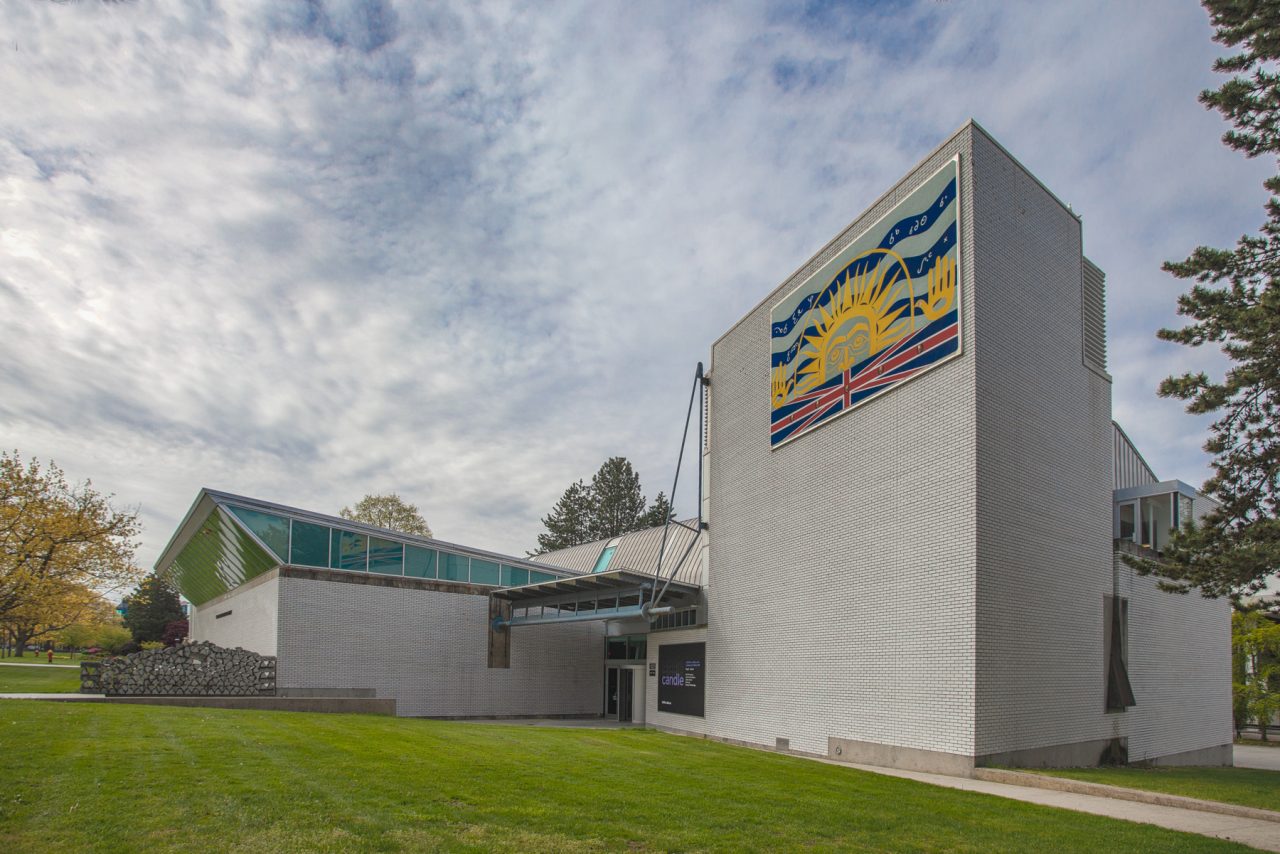
Commissioned for the exhibition To refuse/To wait/To sleep (January 13-April 9, 2017), Marianne Nicolson reworks the British Columbia provincial flag by repositioning and inverting the Union Jack below a setting/rising sun that has been recreated with a Pacific Northwest Coast Indigenous aesthetic.
[more] -
Exhibition
13 Jan – 9 Apr 2017
Koerner Library: Marianne Nicolson
Marianne Nicolson’s paintings graphically depict the back view of two tunic forms placed upon black- and grey-bordered backgrounds. Ghostly traces of raven, human and wolf figures float on the negative spaces like constellations, while a tree of life along with thunderbird, mink and serpent forms sit in bold symmetry on the tunic shapes. Signifying wealth and social standing, coppers (both intact and ceremonially broken) are affixed to the panel, as are abalone discs, coins and military-style brass buttons. With these paintings, Marianne Nicolson addresses the shifting state of economic growth and decline amongst the Kwikwasut’inuxw and Dzawada̱’enux̱w – the Gilford Island and Kingcome Inlet communities of Nicolson’s ancestry – following from contact with non-Indigenous peoples. The “changing tides” of the titles suggest the irresistible forces of economic and cultural change as fortune and influence turned from a mutually beneficial economic relationship in the 1880s to an amplified campaign of cultural suppression. The earlier period saw an influx of wealth through trade and the availability of new materials – as well as the introduction of decimating diseases. The tradition of button blankets and tunics grew from access to new materials, emerging when the culture was intact enough to incorporate new materials into existing forms in ways consistent with tradition. The 1920s saw the enforcement of the anti-potlatch laws that had a devastating effect on the social, cultural and economic well being of many Northwest Coast communities. On the Kwikwasut’inuxw painting, centered on the Thunderbird’s abdomen, is a coin dated 1929. This is the year that the tides turned on the decline of the Kwakwa̱ka̱’wakw, marking the beginning of a population revival that continues into the present. Tracing the push and pull of world views through the materials she uses, Nicolson’s work is part of a contemporary resurgence of Indigenous cultural practice and a means to resist its political and social assimilation.
[more]


